________________________________________________________________________
From this Website:
Where tropical meets temperate.
The delightful Tamborine Mountain Botanic Gardens are a must-see experience on any visit to the region.
Just a short drive through the hinterland west from the Gold Coast, the Tamborine Mountain Botanic Gardens combine a colourful and diverse range of exotic and native flora. The Gardens include a glorious lake as the centrepiece, a tranquil Japanese garden, a tropical rainforest walk and many other delights.
Bring a picnic, bring the children, take a stroll along the many walks and learn why the Tamborine Mountain Botanic Gardens are truly where Tropical meets Temperate.
The Gardens are supported, maintained and administered by volunteers and are some of the most dynamic and active people promoting the values and enjoyment of gardening in south-east Queensland.
__________________________________________________________________________
Ken Note: You could spend hours walking around this Botanic Garden. These are some of the photographs I took as we walked through the different zones. The scheme of the Open Gardens at Mt. Tamborine was listed as a garden to look at as part of the September 2019 Springtime gardens. It was just as well we went as the roses and orchids plus many other flowers were all out.
____________________________________________________________________________
Initial Entry to the Garden:
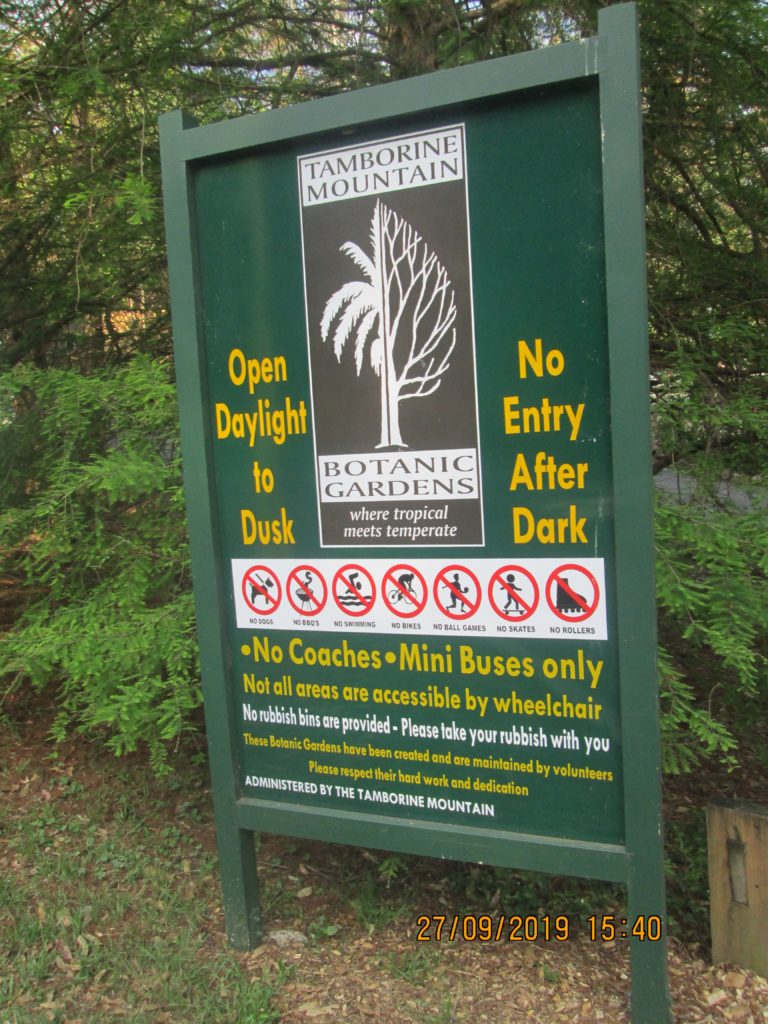
The initial entry sign into the Mt. Tamborine Mountain Botanic Gardens.

The walk – through shelter / lunch room shed adjacent to the parking area.
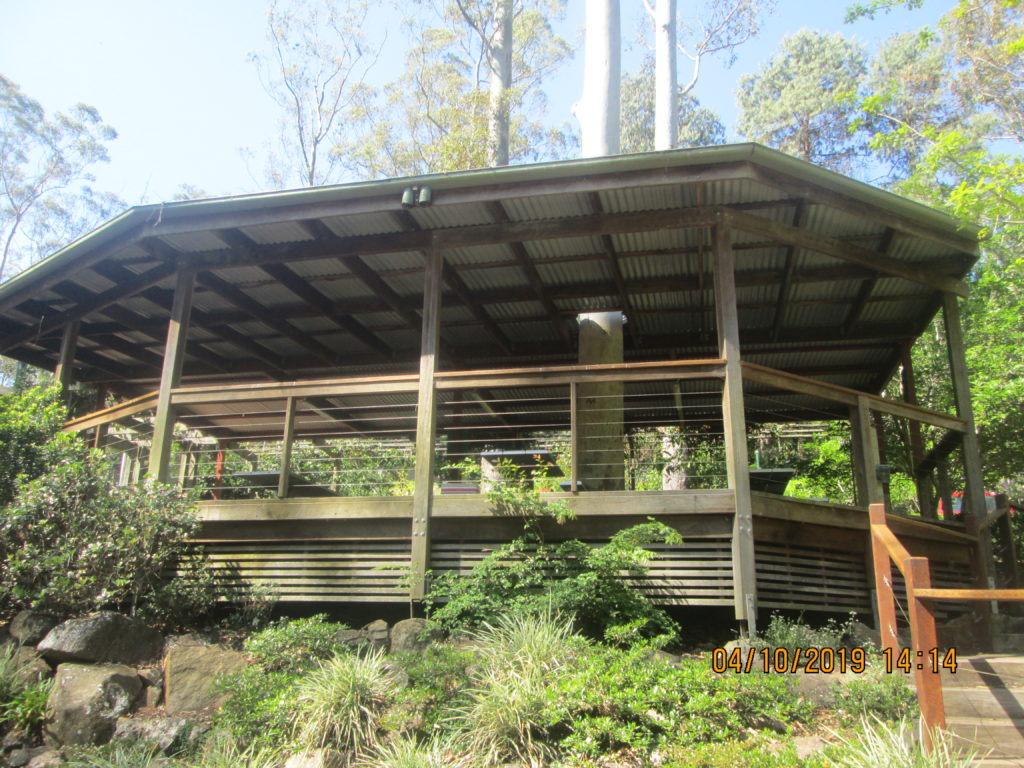
The shelter / lunch room shed from below.
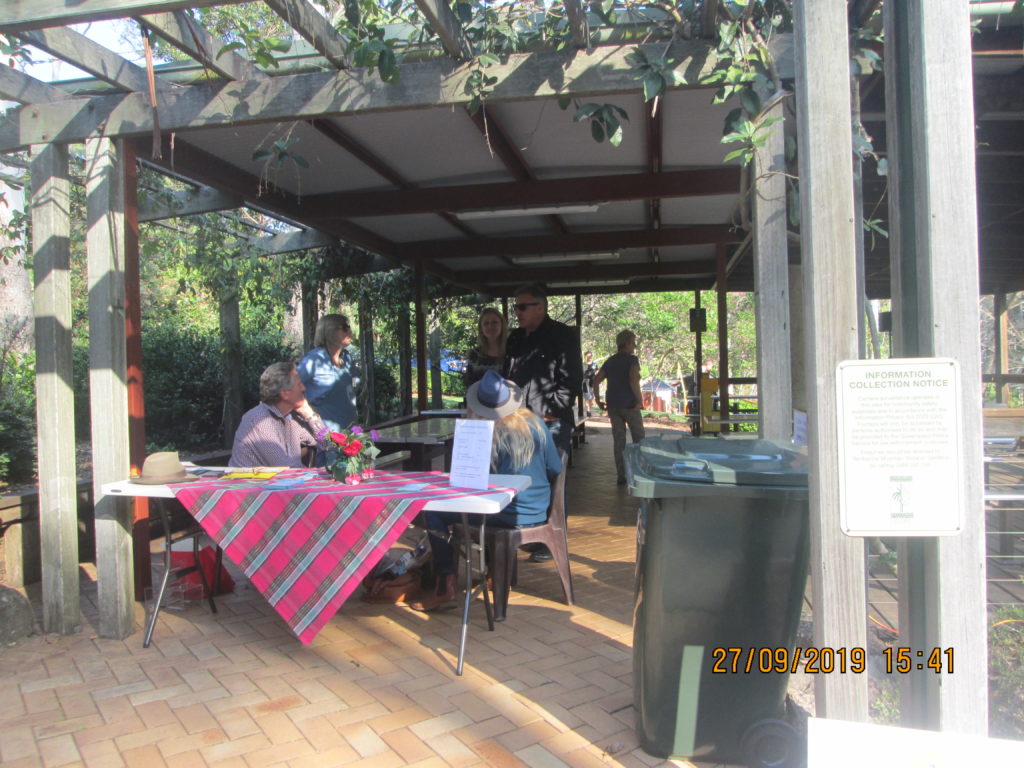
______________________________________________________________________________
1. Entry Into The Garden Via The Lagoons:
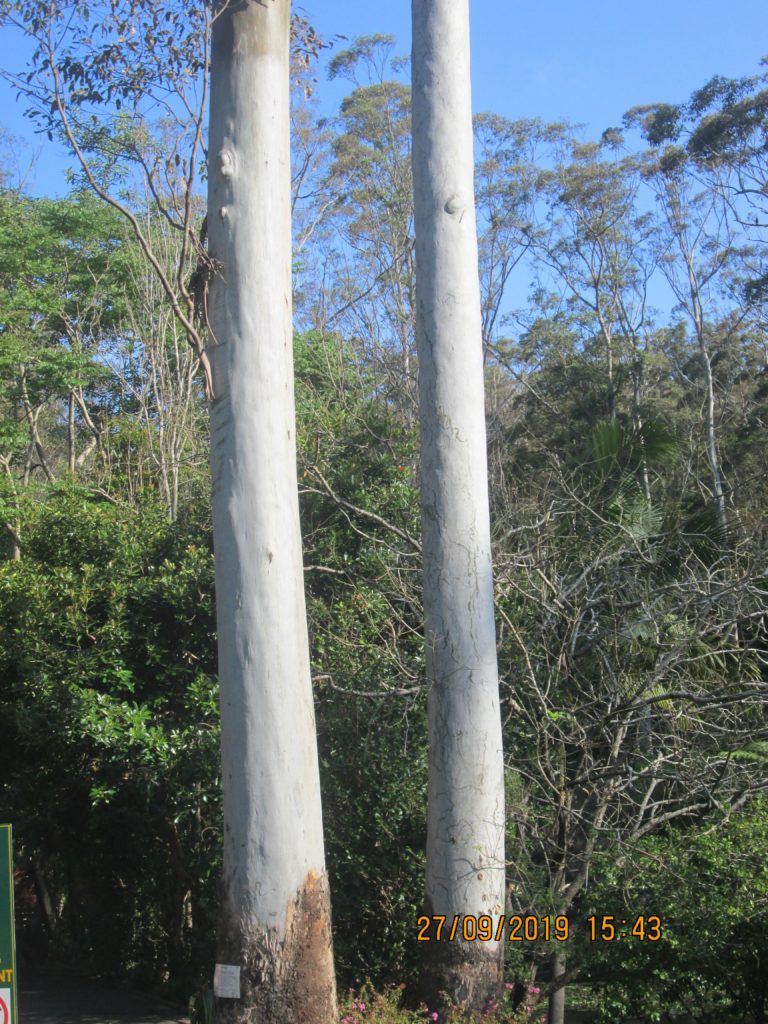
Two big gum trees with white bark greet you a you enter the park ….. very spectacular !!
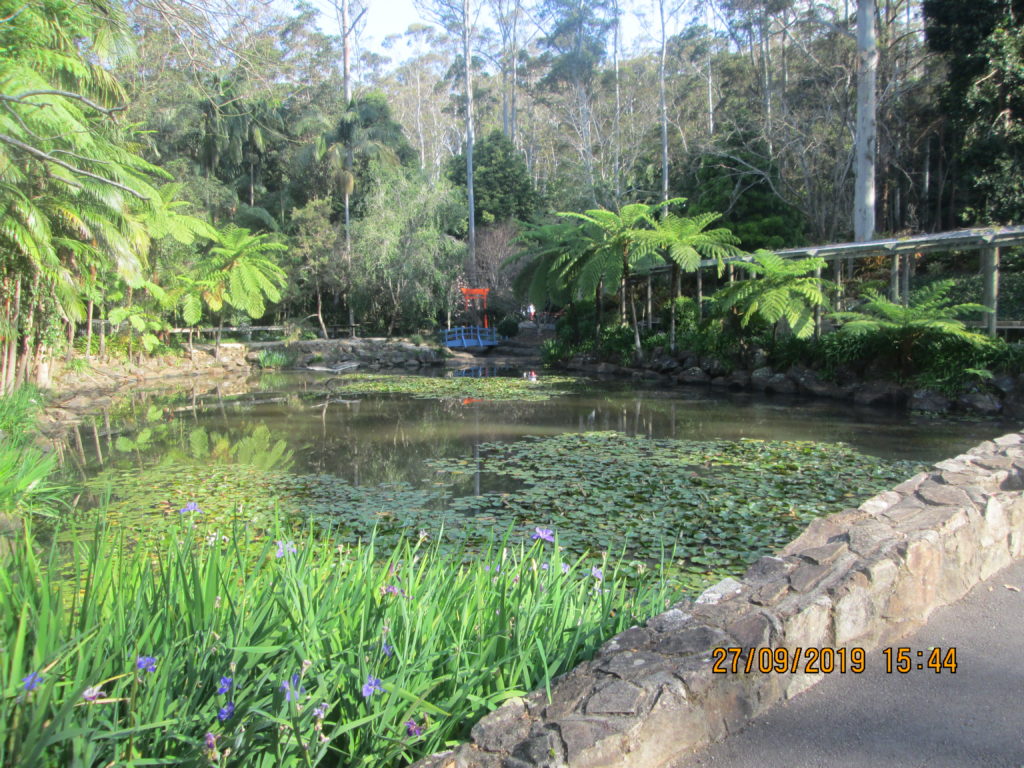
Coming down into the park you cross over a small stone bridge. The bridge divides a big lagoon into two large pools …. Each filled with many waterlilies. If we come in the flowering season for waterlilies, the lagoons would be a mass of blue flowers.
See the post on our house: Post 10: Ponds in the Garden as Special Garden Rooms
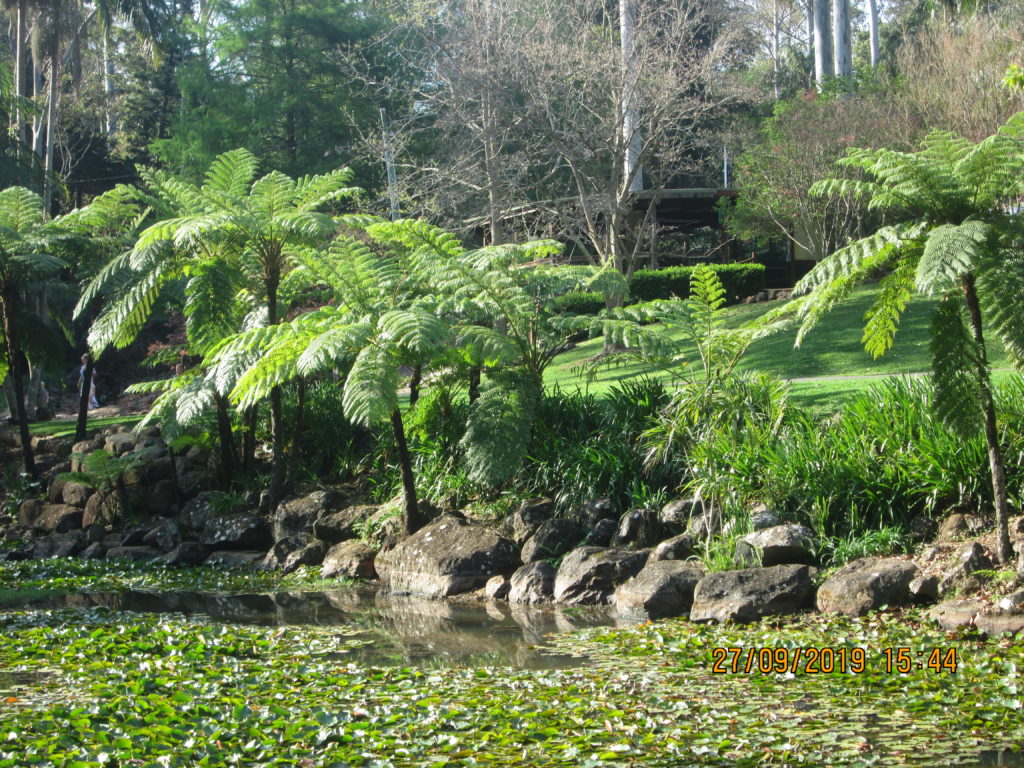
The edges of the lagoon have planted with tree ferns which fit in the rainforest and Bangalow palms themes. See details on tree ferns at this website.
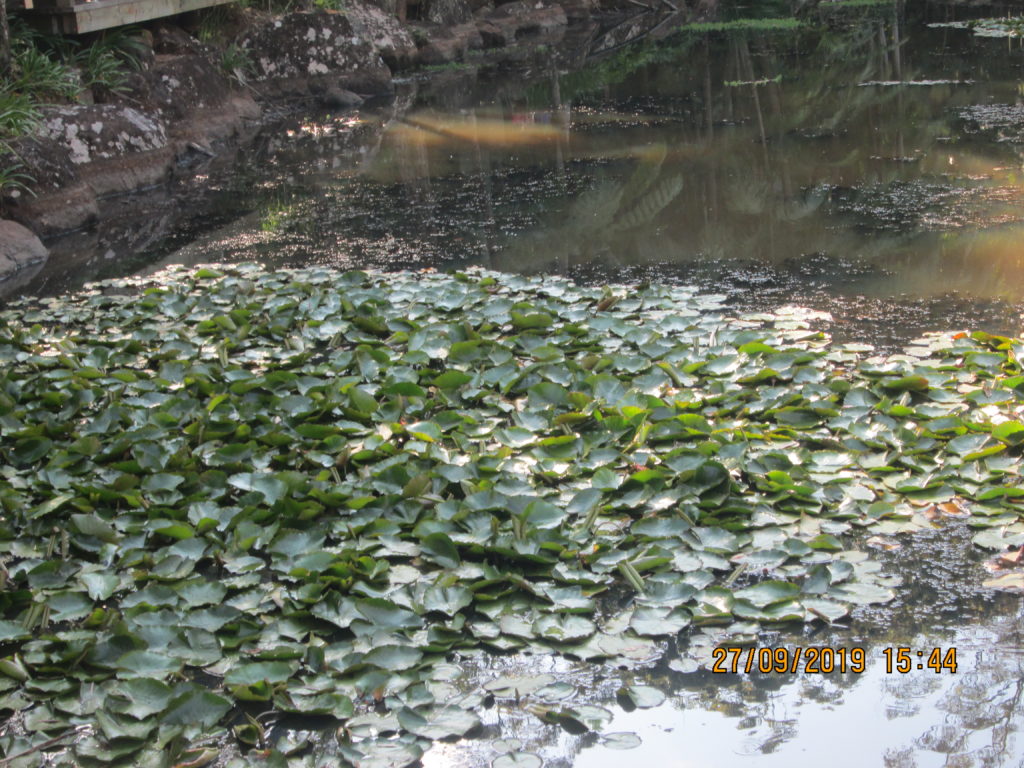
Waterlilies filling the lagoon.
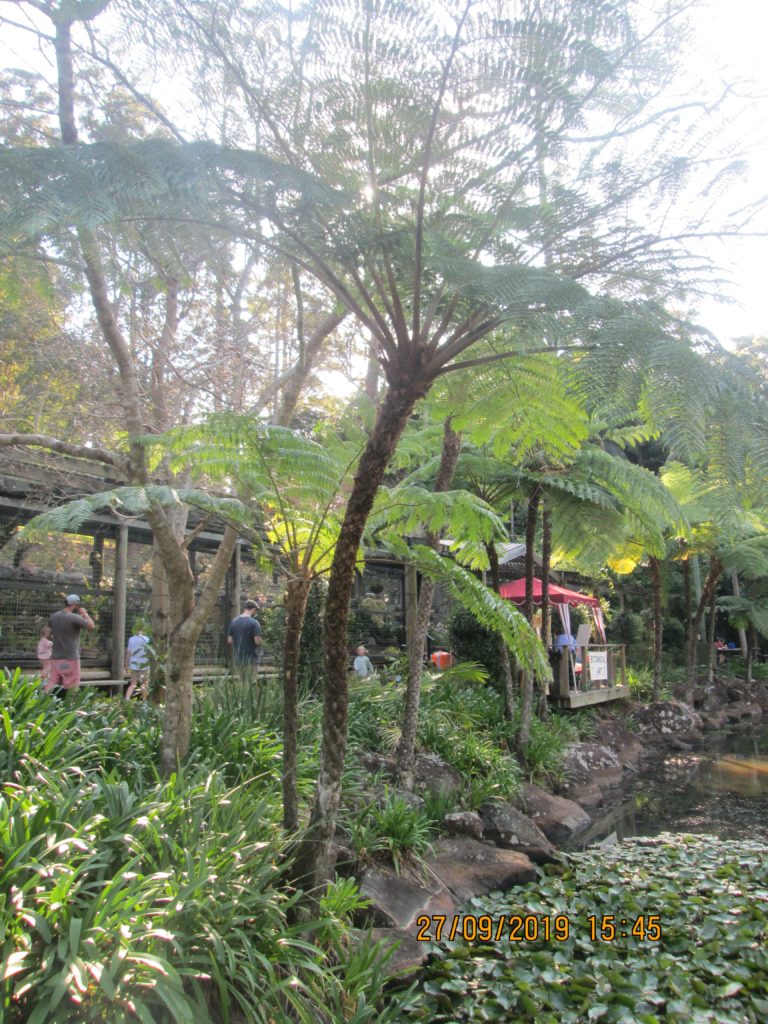
Tree ferns closeup.
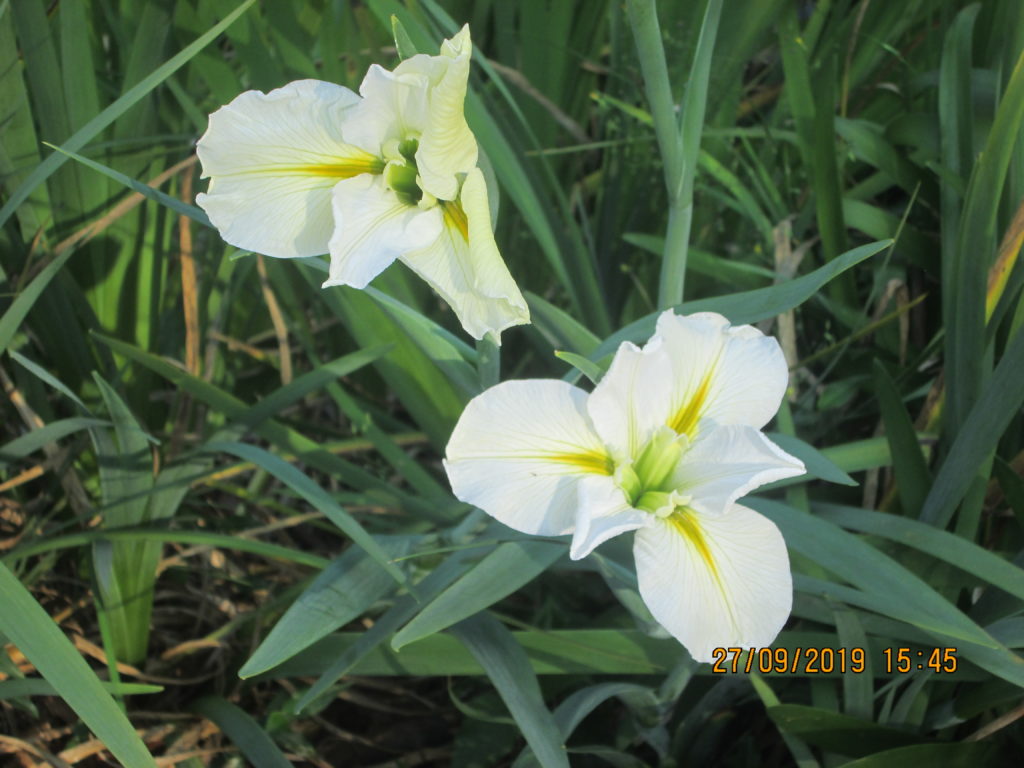
A flowering Dietes. See details on Dietes at this website.
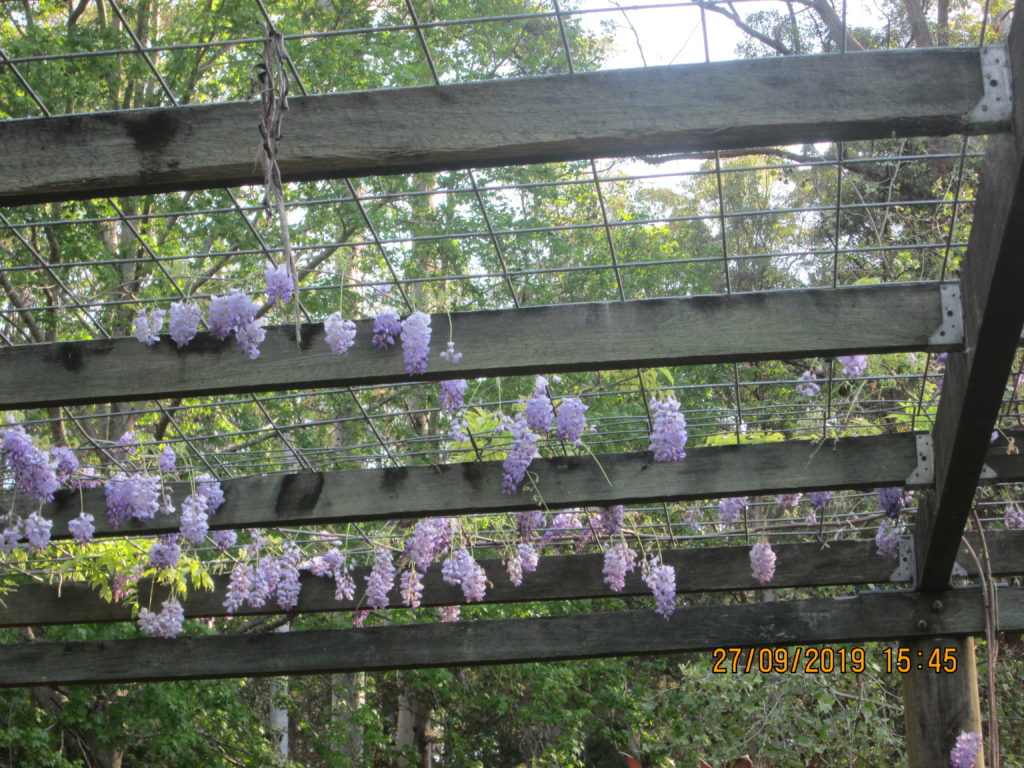
A trellis by the lagoon makes for a very pleasant walk by the lagoon. The trellis has been planted with a wisteria vine which in September is flowering with beautiful hanging light purple flowers. See details on wisteria vine at this website.
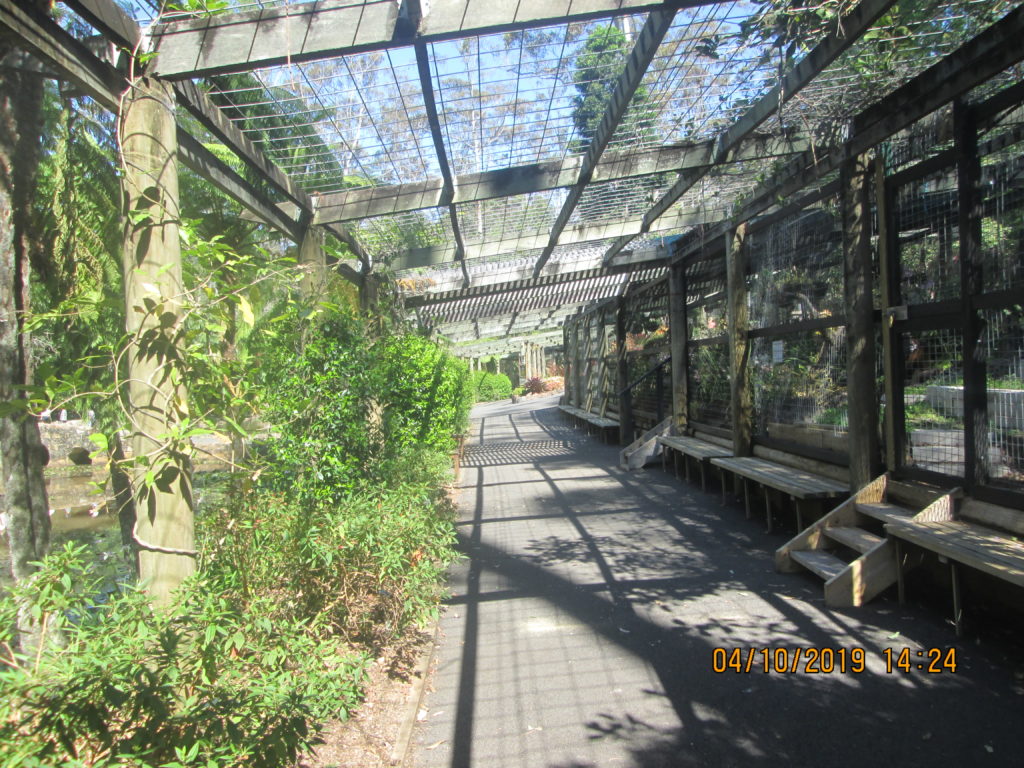
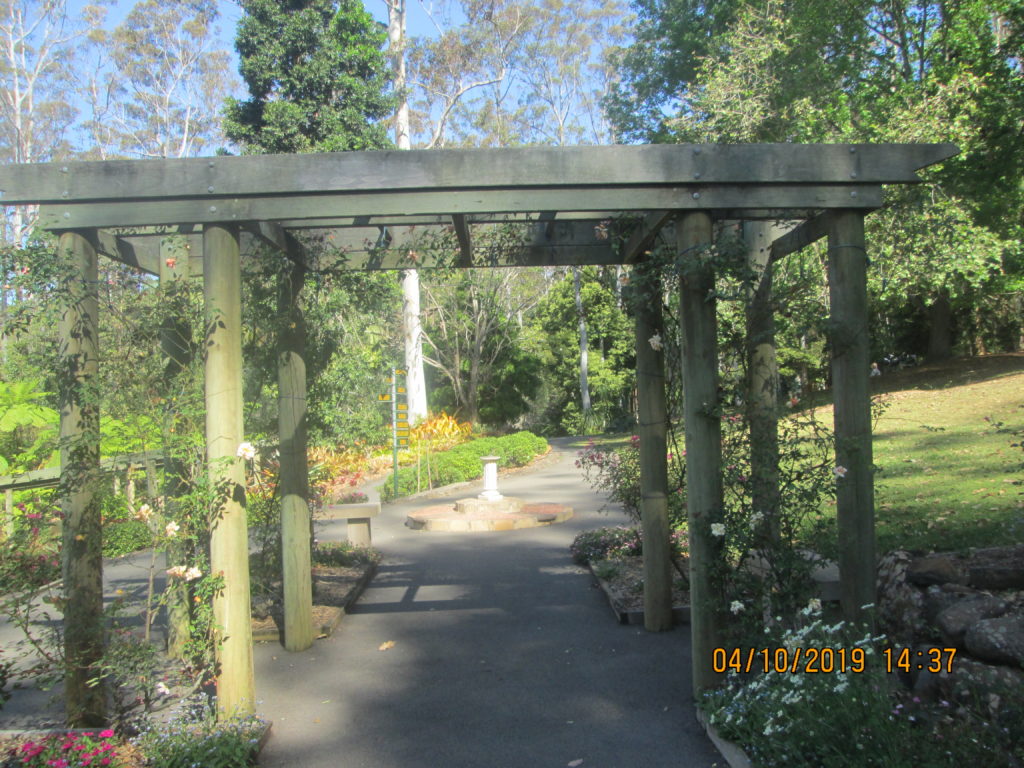
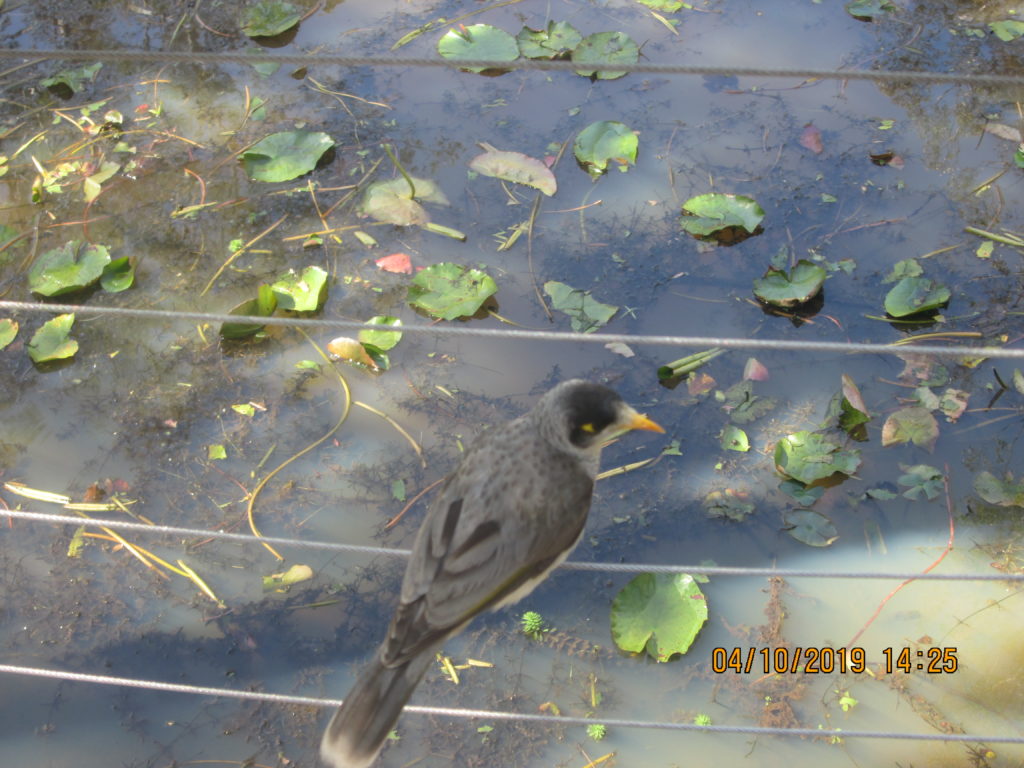
A noisy minor bird perched on a wire overlooking the lagoon.
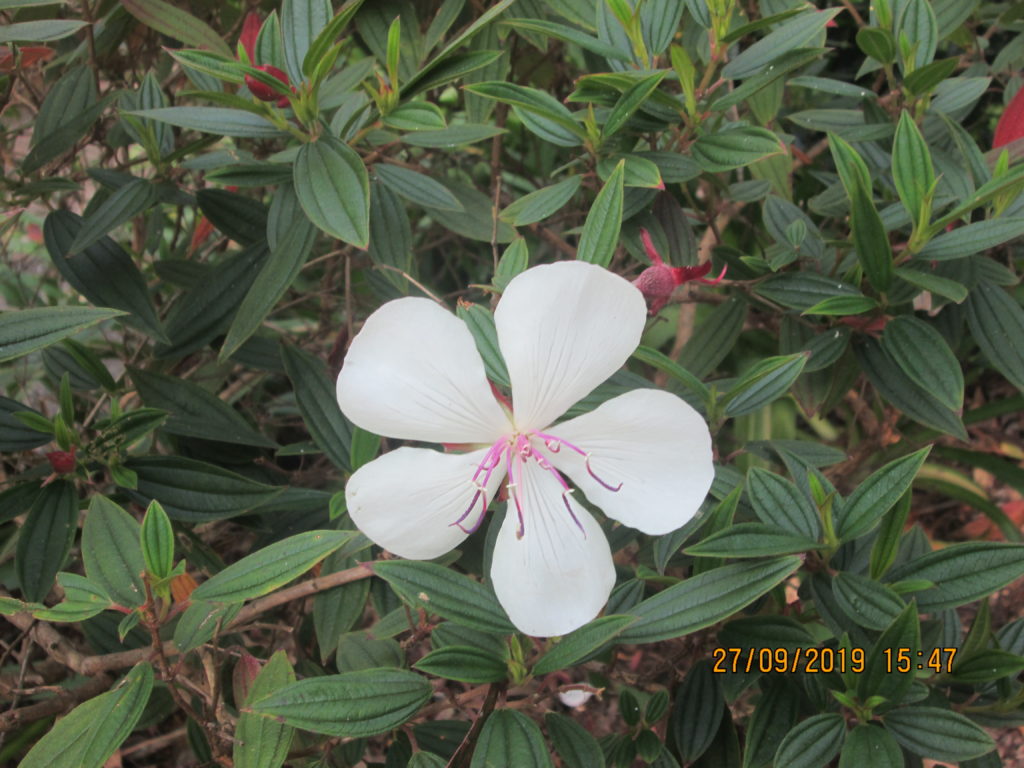
A melastoma in full flower. Species in flowering colours are variable. They vary from a light colour as here to deep purple.
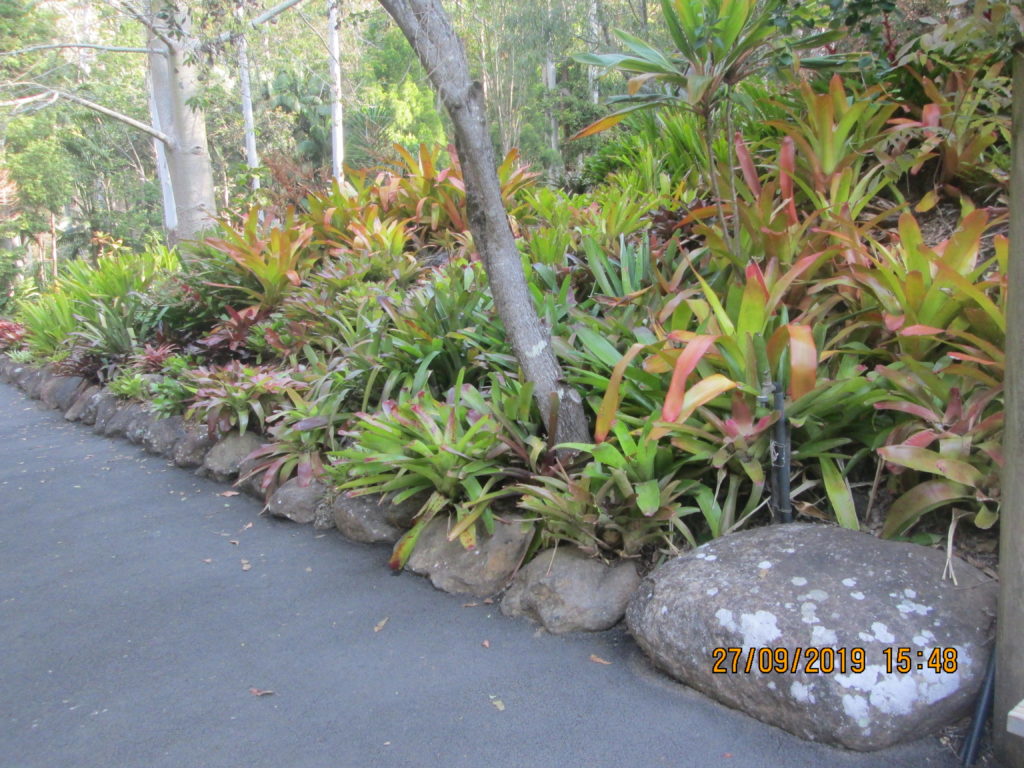
A dry bed of bromeliads planting. They have beautiful flowers but plants are simple multicoloured straplike leaves. See details on bromeliads flowers at this website.
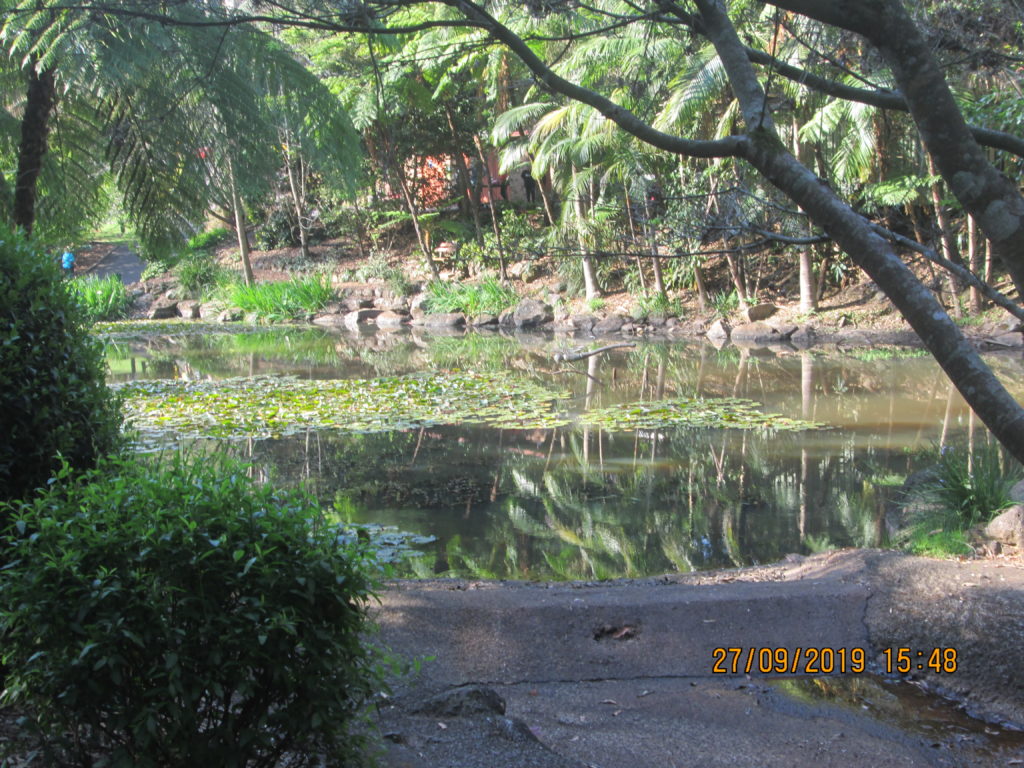
A view out over one of the lagoons. There is an interesting metal sculpture of a big grasshopper resting on a twig. See the closeup photo below.
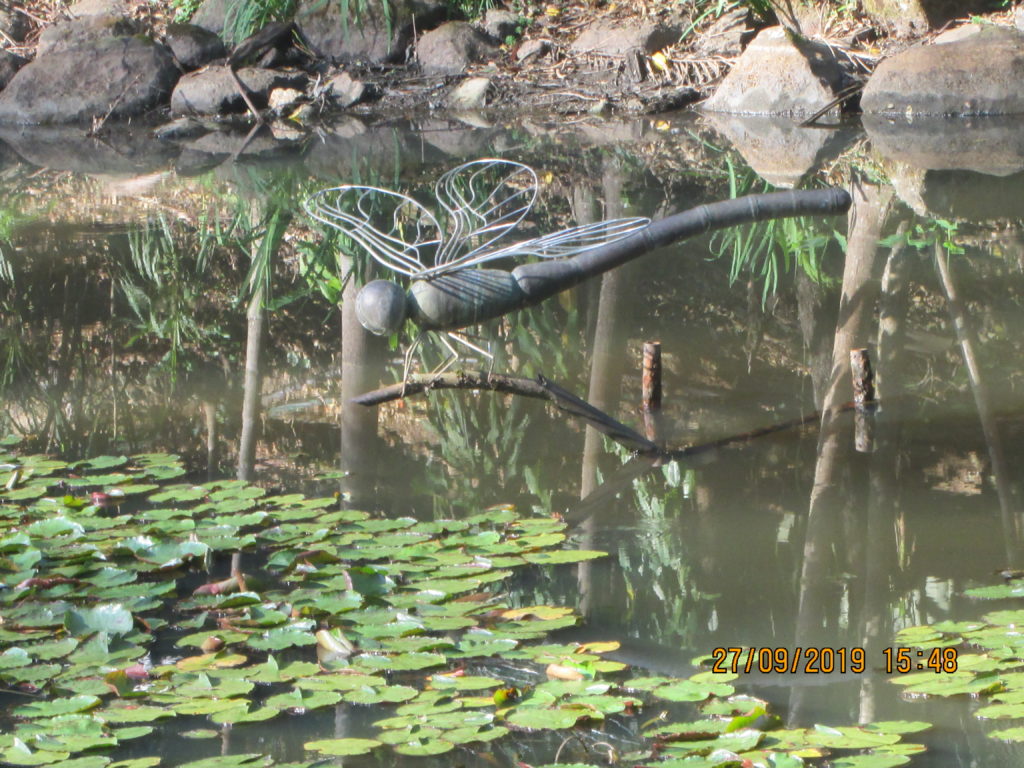
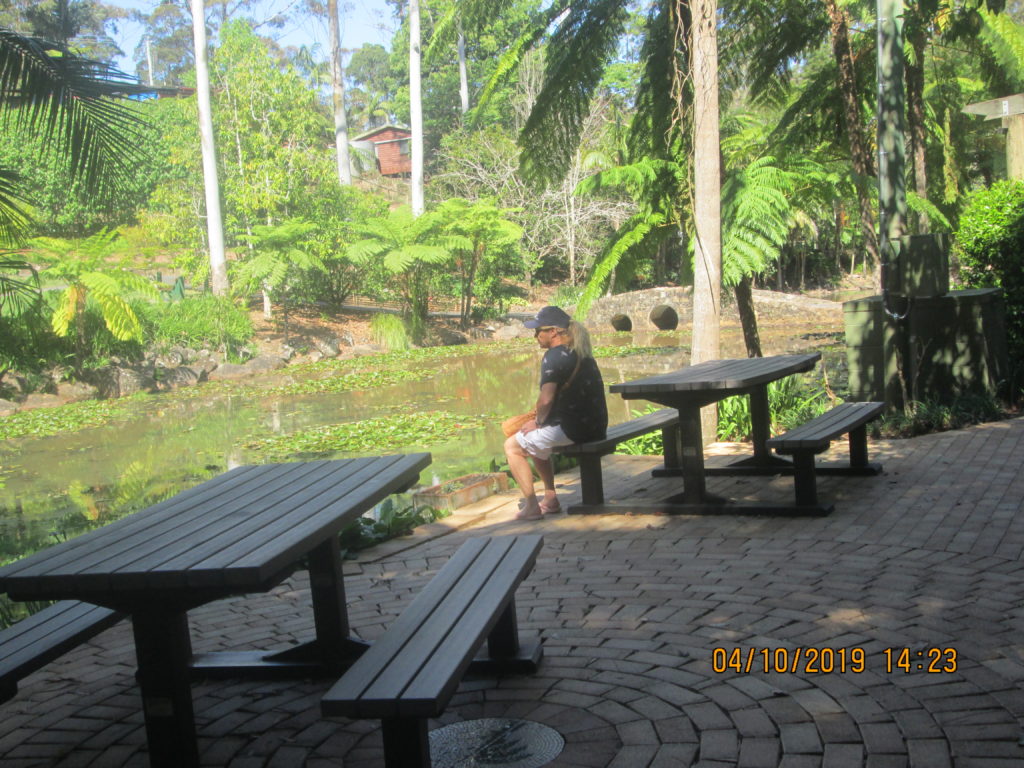
Picnic tables by one of the lagoons.
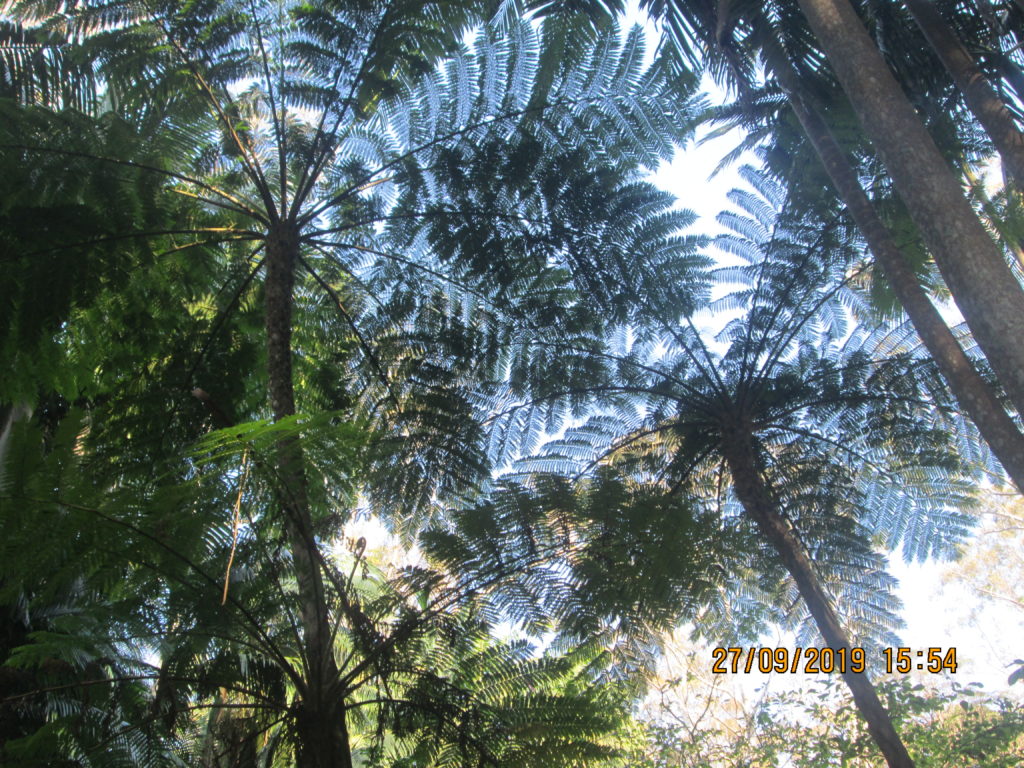
Under some of the tree ferns.
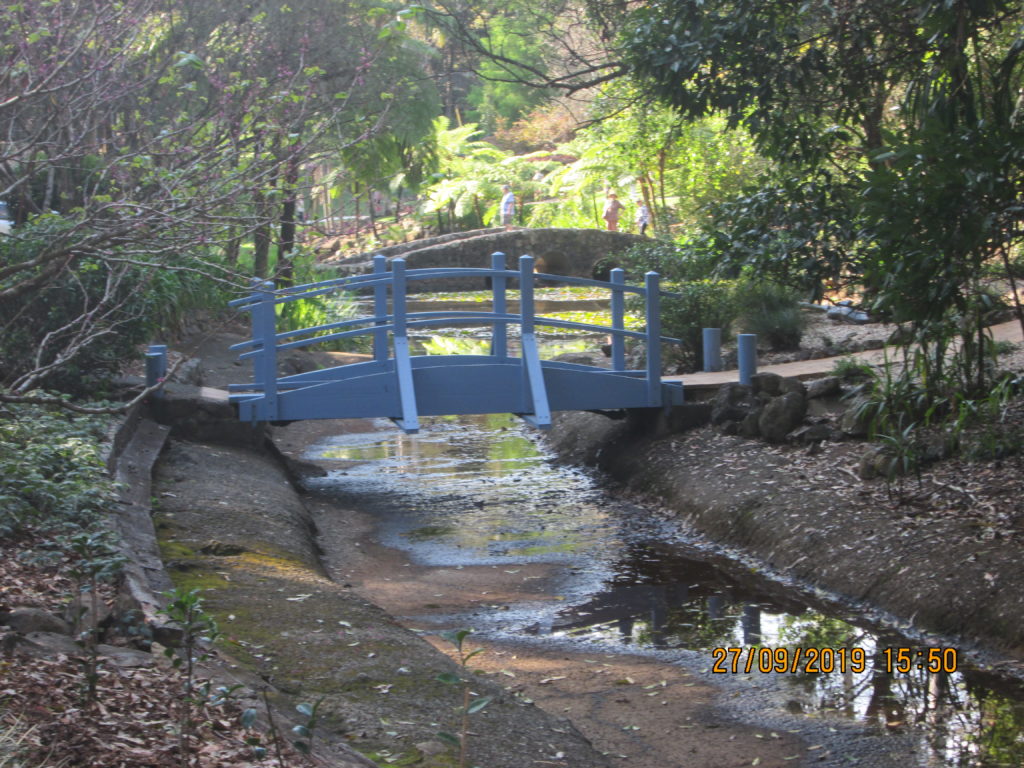
Bridge over a small creek that drains into the lagoon.
______________________________________________________________________________
2. The Walk Through The Bangalow Palm Forest:
Bangalow Palms are an Australian rainforest palms. See this website: bangalow palms

Metal floral sculptures in an open space before you go into the closed space of the Bangalow Palm Forest.
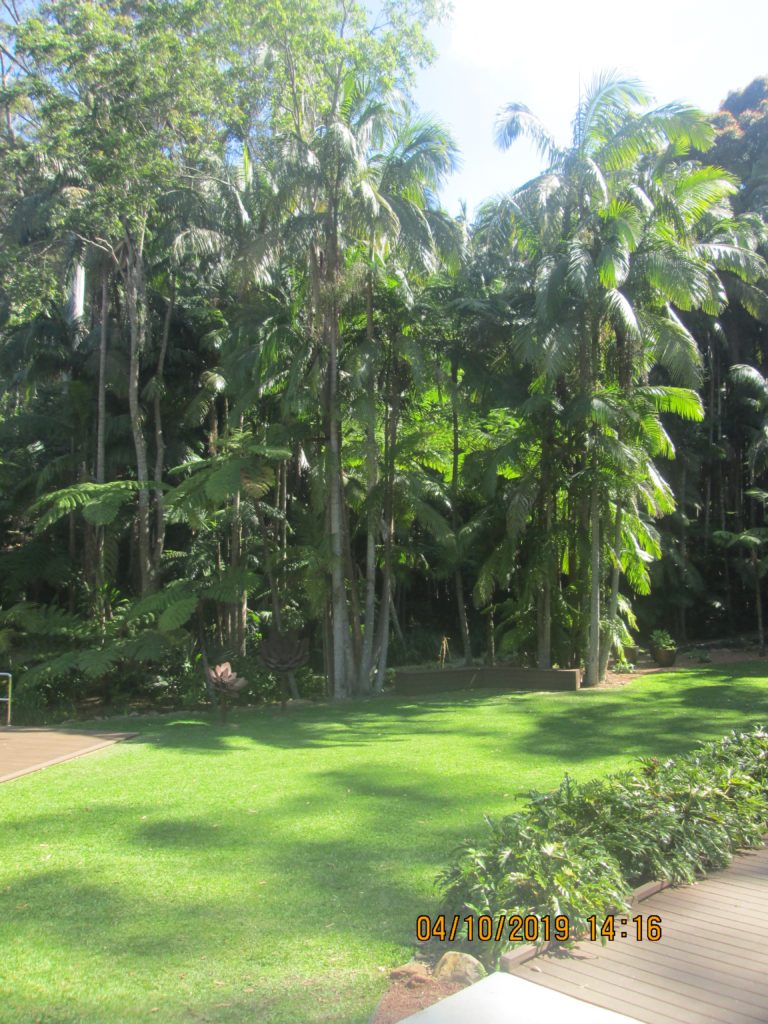
A big open space adjoining the lagoon before you go into the closed space of the Bangalow Palm Forest.
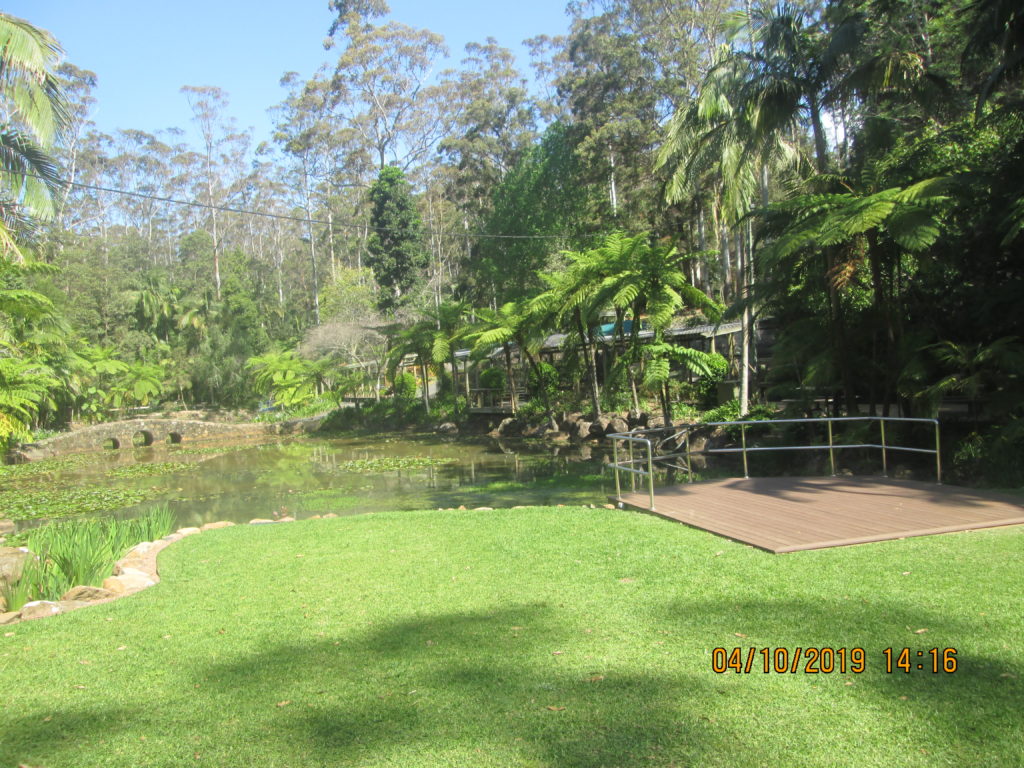
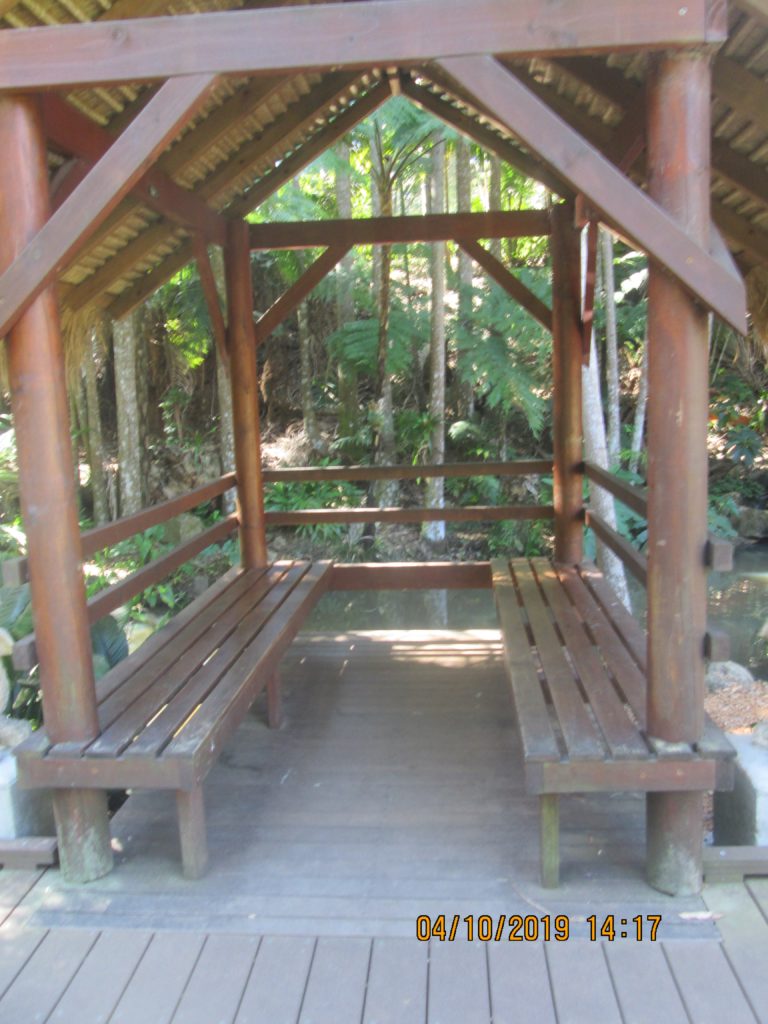
A rain shelter for sitting out of the rain yet being amongst the Bangalow Palm Forest.
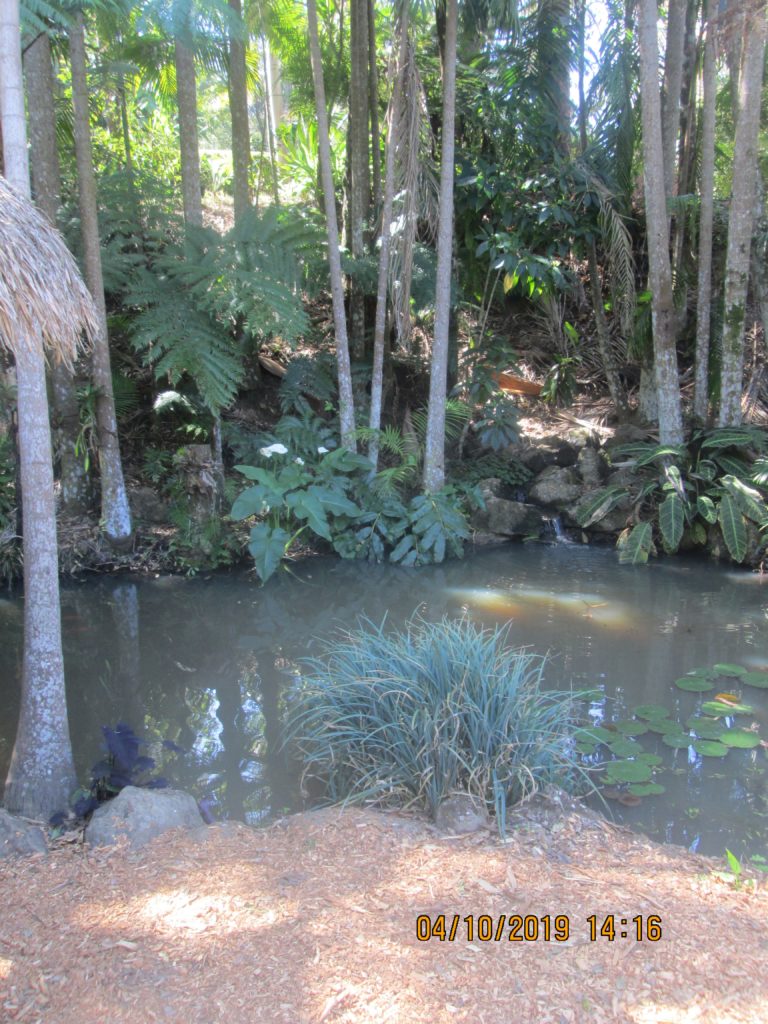
A small pool between the footpath and the Bangalow Palm Forest.
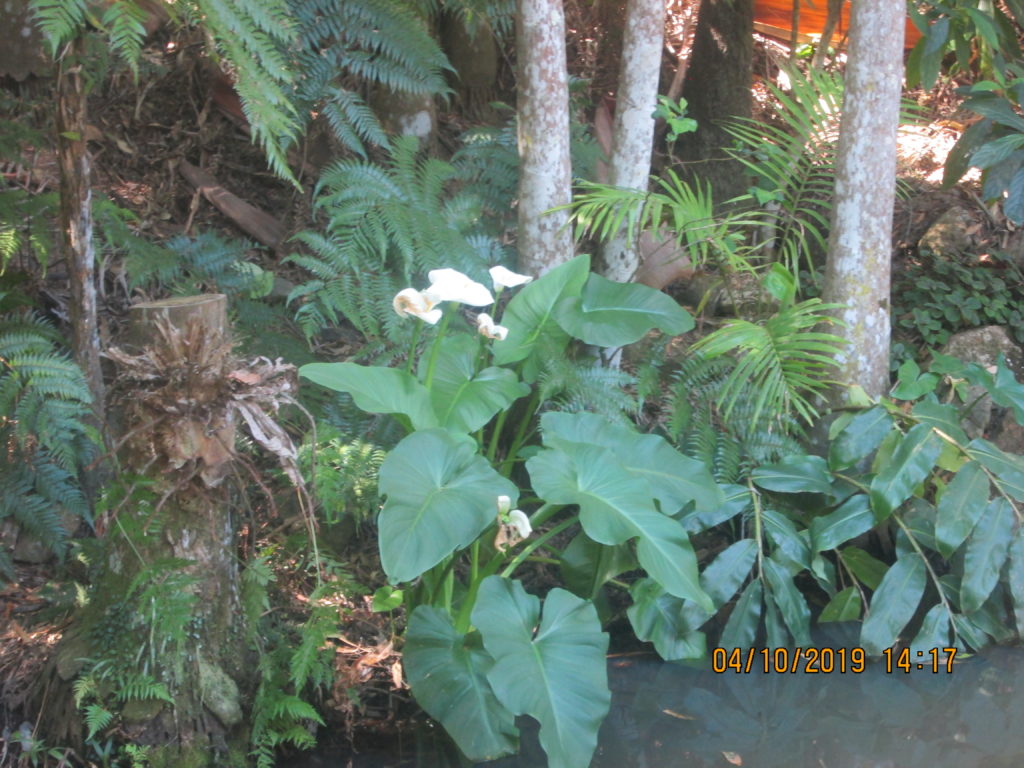
Broad-leaved arum lilies with white flowers and broad-leaved native ginger planted around the edges of the pool.
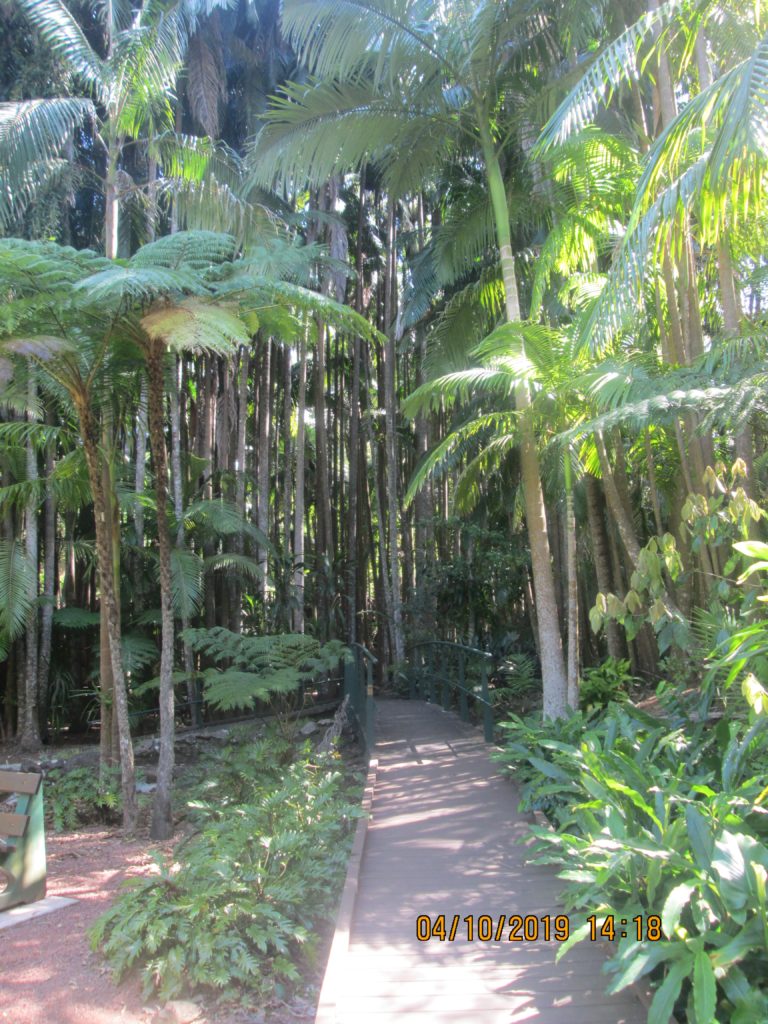
Footpath into the dense Bangalow Palm Forest.
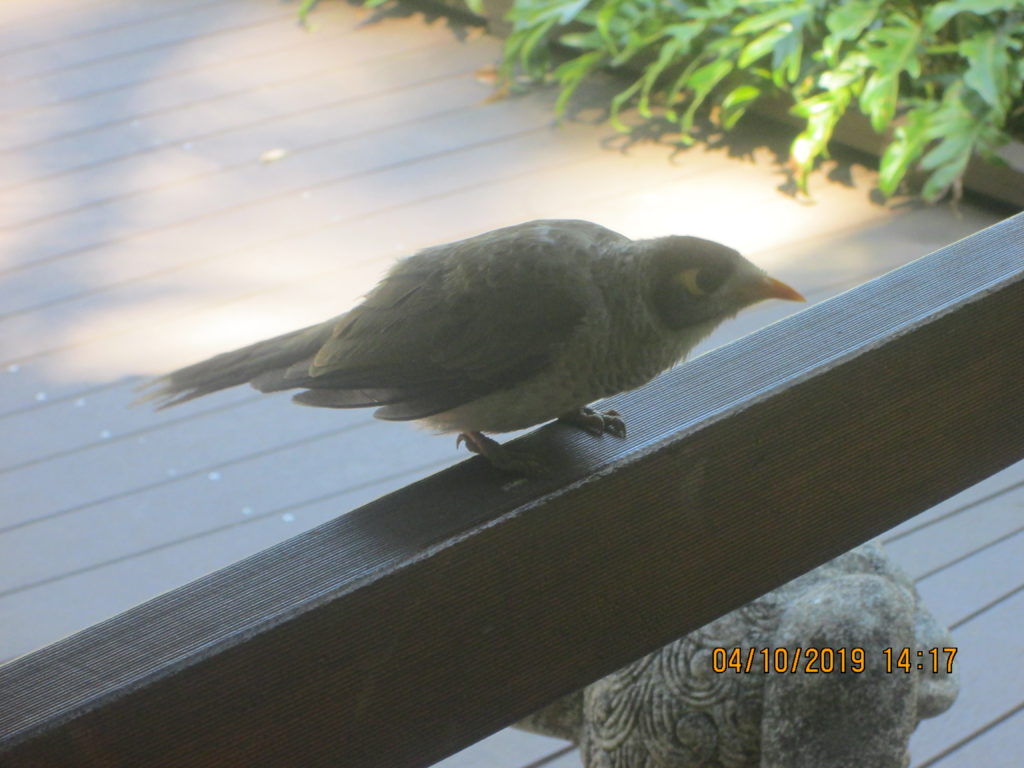
A noisy minor bird perched on a beam.
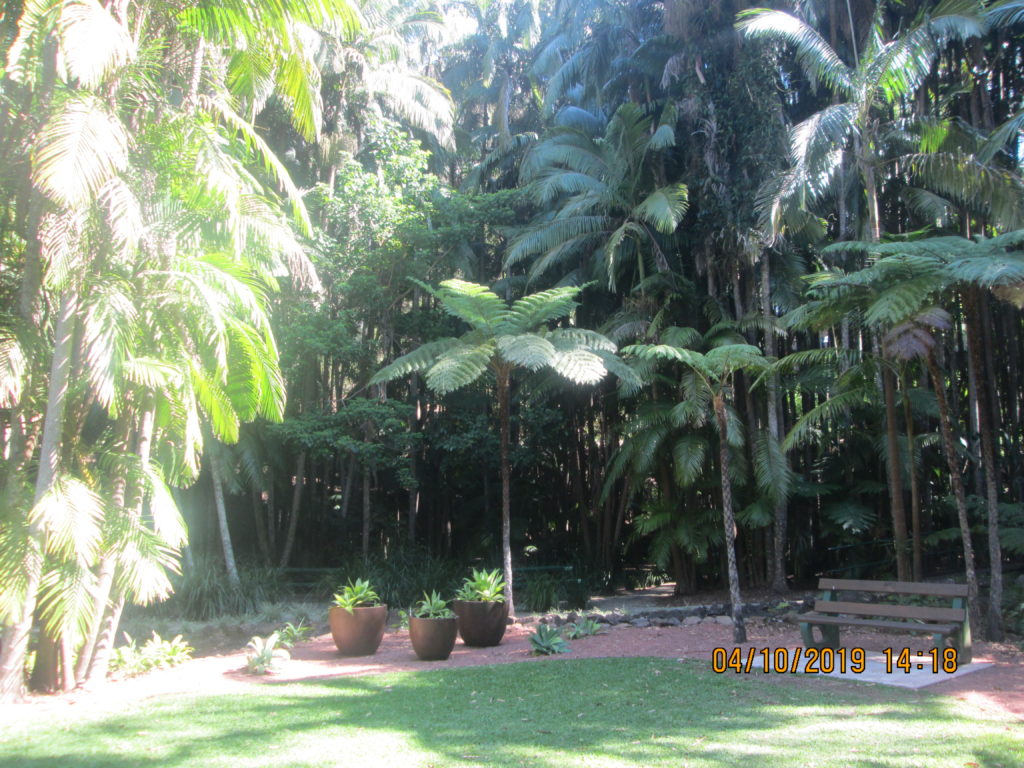
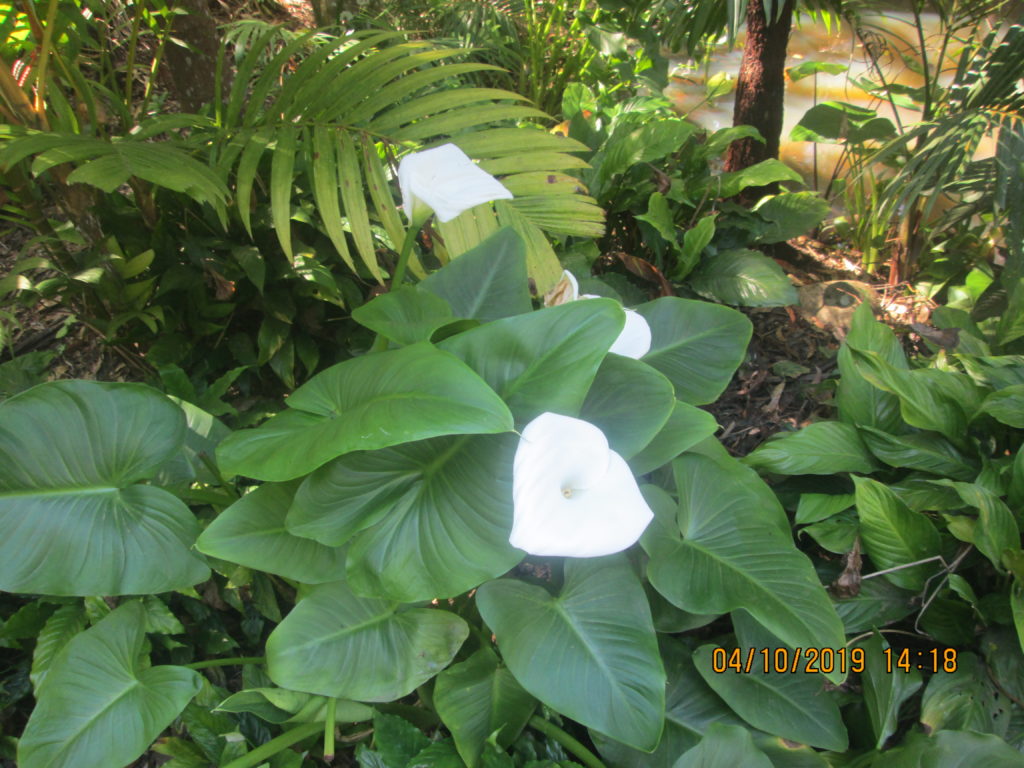
Broad-leaved arum lilies with white flowers and broad-leaved native ginger below …. are shade-loving plants.
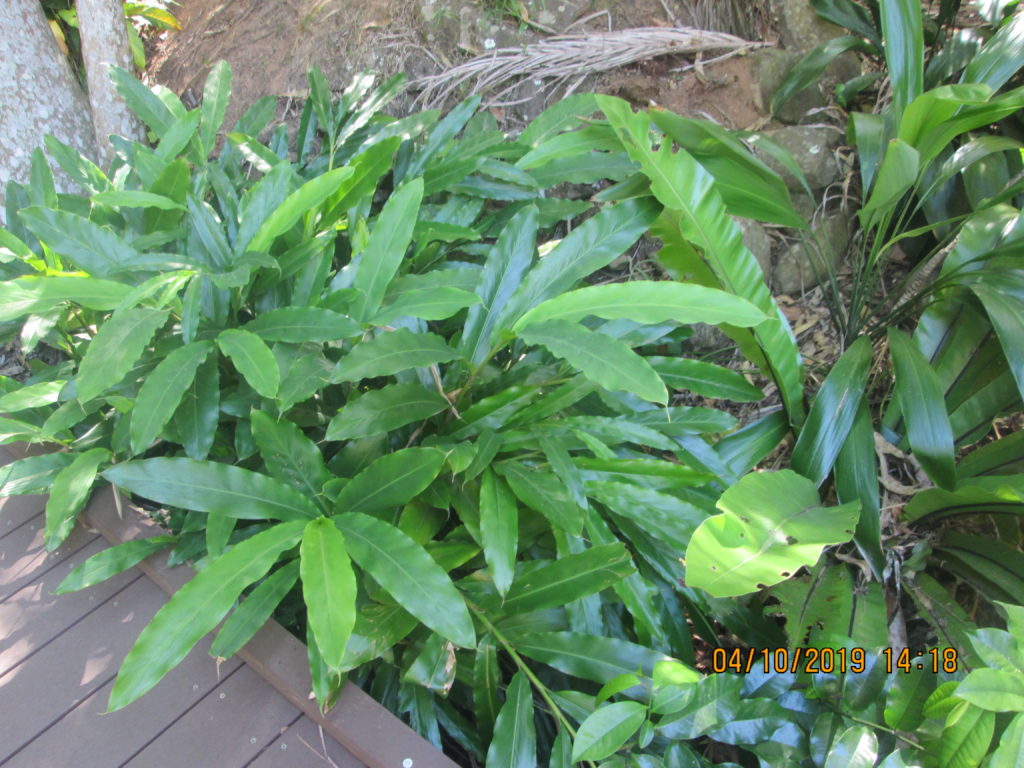
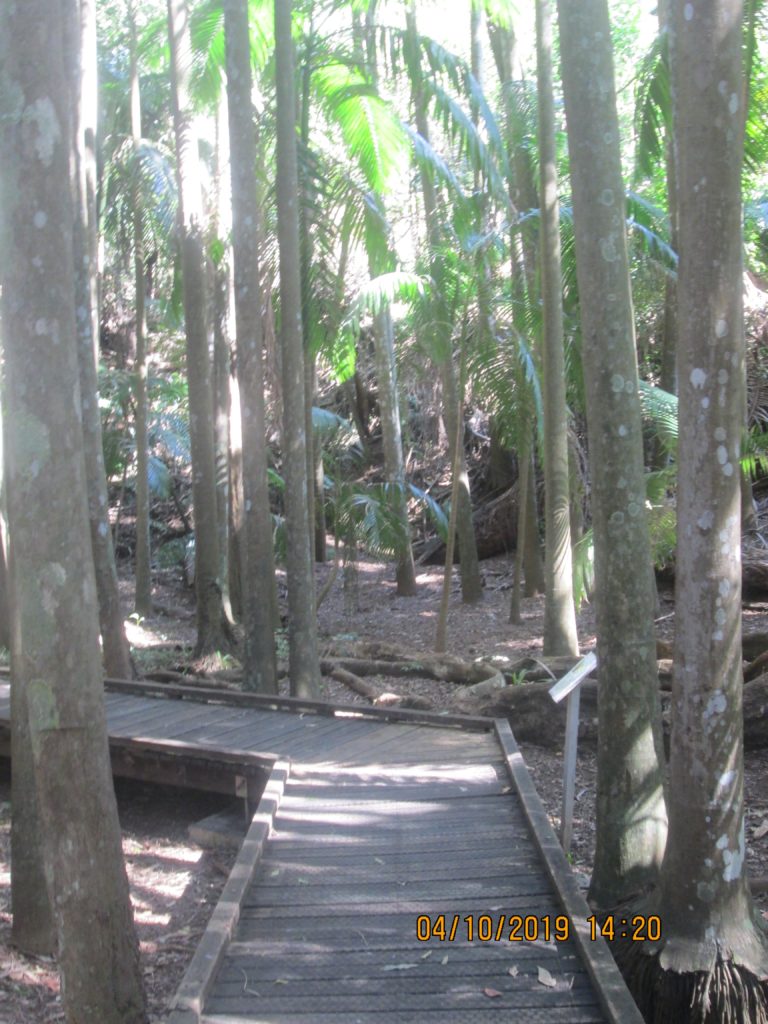
Bangalow Palms as a forest of tall thin trunks. Palms can grow over 20 m tall.
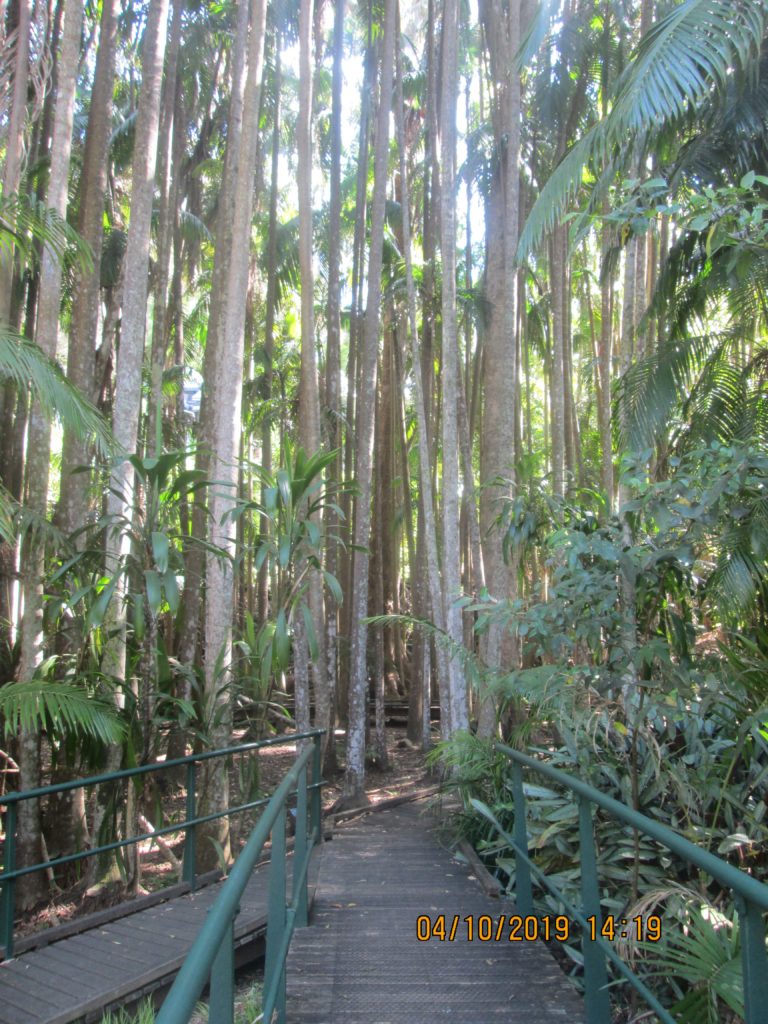
______________________________________________________________________________
3. The Japanese Garden:
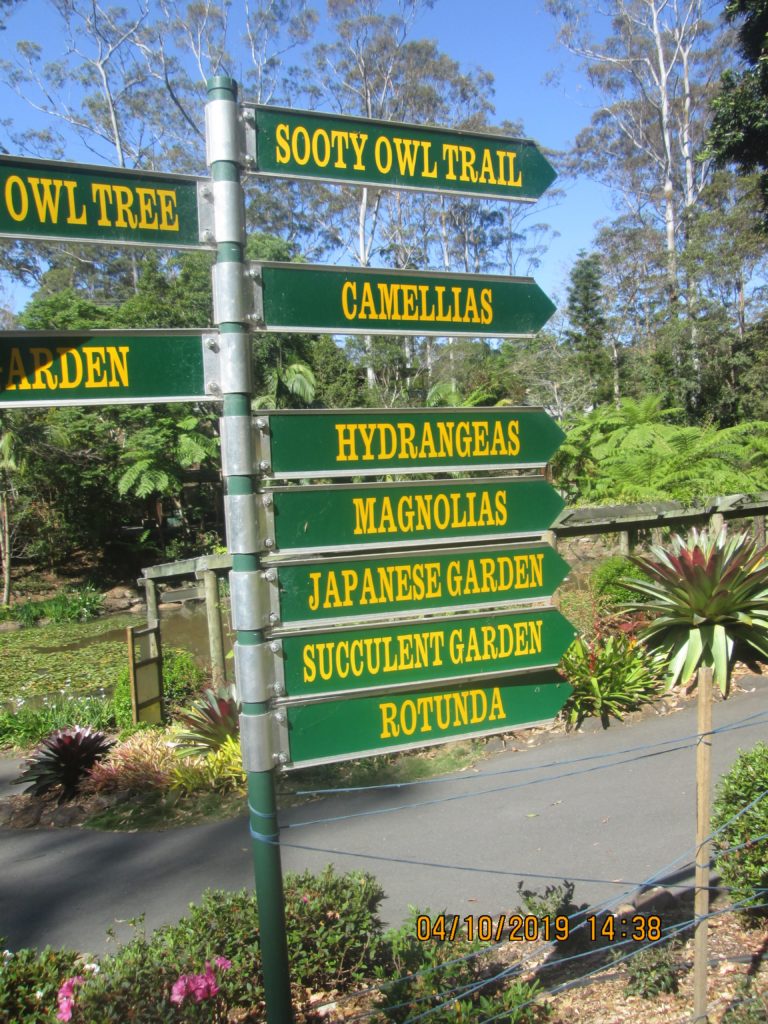
Sign post along the botanical garden footpath. There is enough to see in this botanical garden to spend all day there especially if you take a picnic lunch.
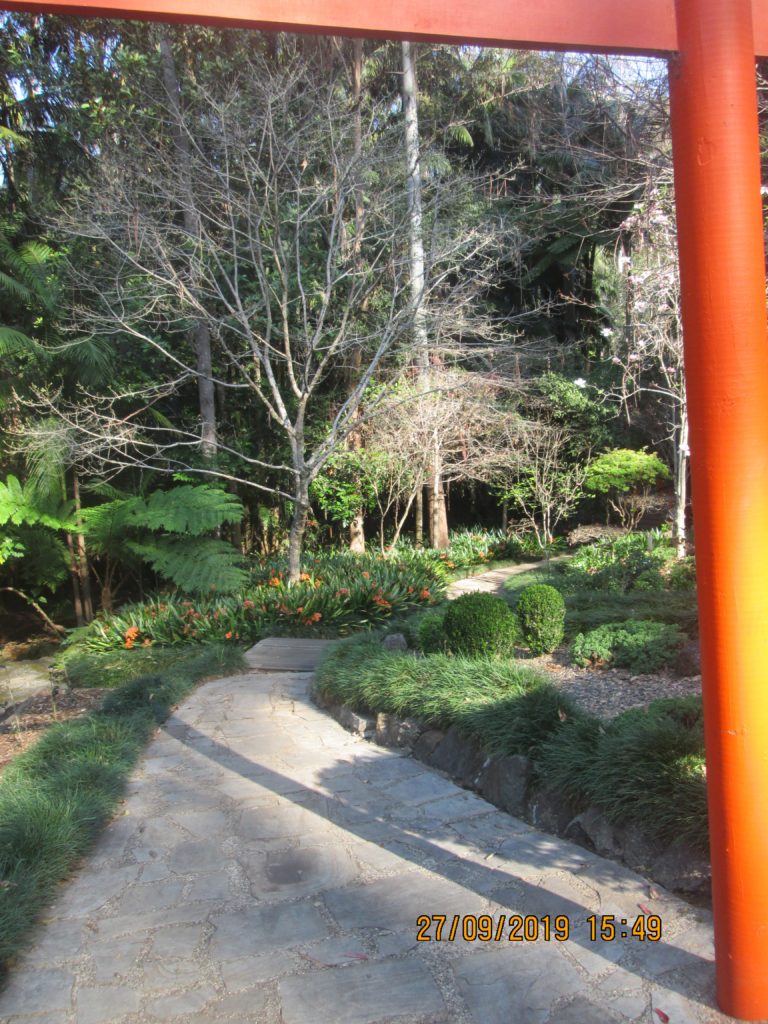
Framework before you enter the Japanese garden.
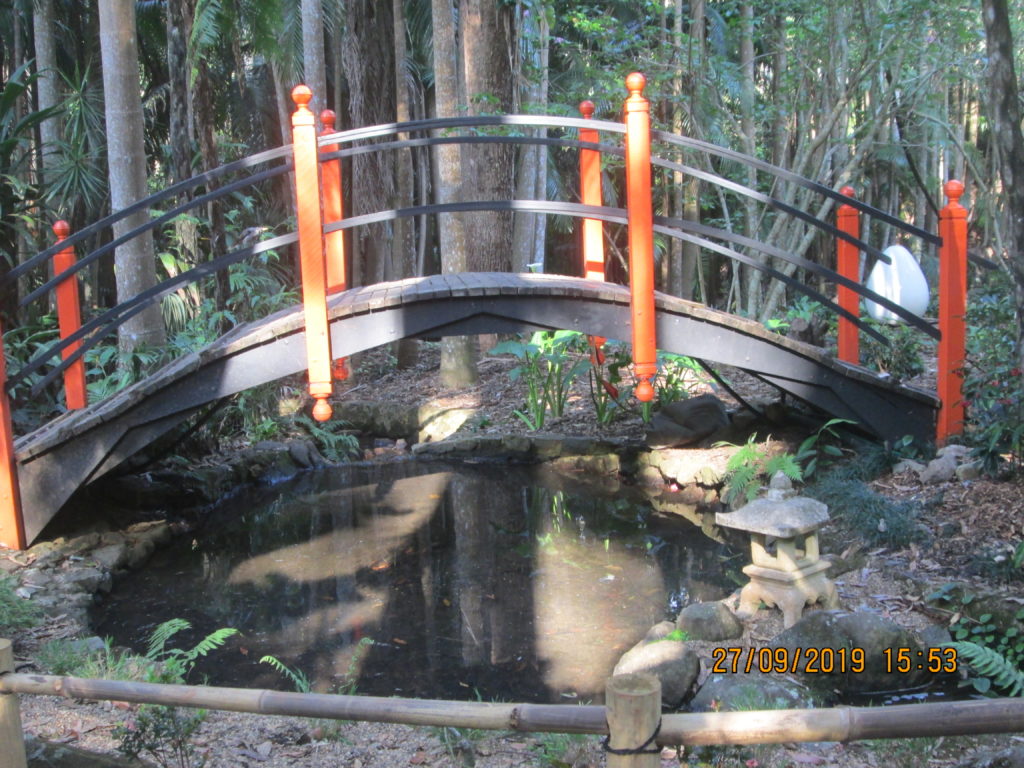
Japanese garden bridge over the little creek in the Japanese garden.
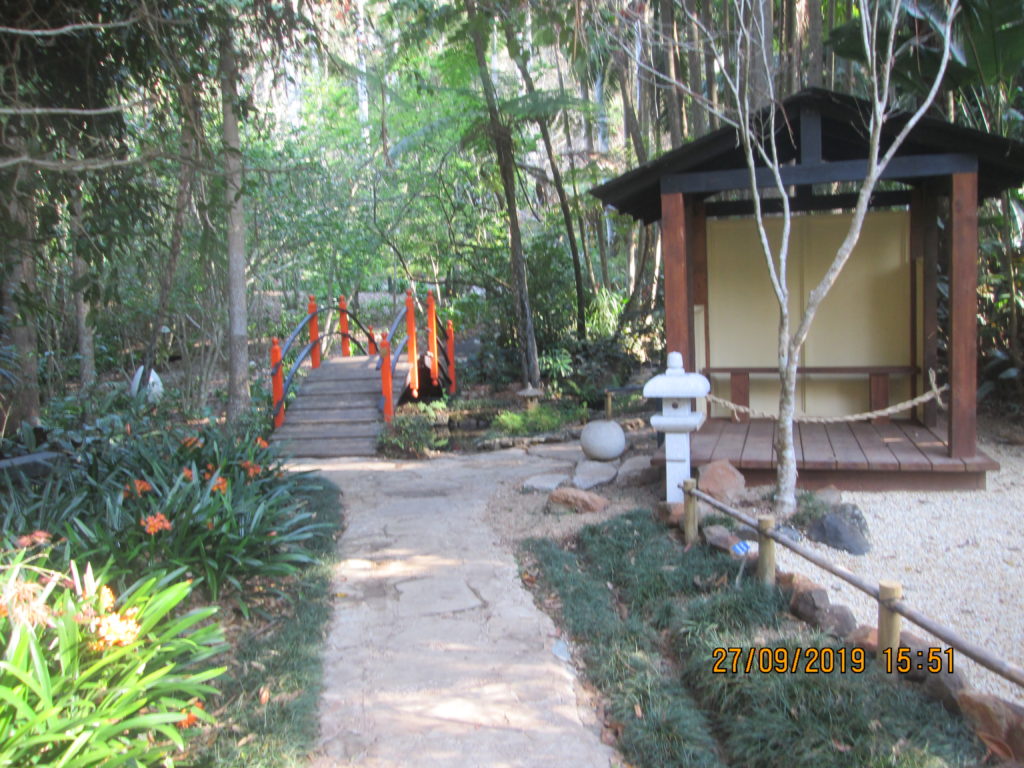
Shelter shed in the Japanese garden.
From Wikipedia, the free encyclopedia: Traditional Japanese gardens are very different in style from occidental gardens. The contrast between western flower gardens and Japanese gardens is profound. “Western gardens are typically optimised for visual appeal while Japanese gardens are modelled with spiritual and philosophical ideas in mind. Japanese gardens have always been conceived as a representation of a natural setting. The Japanese have always had a spiritual connection with their land and the spirits that are one with nature, which explains why they prefer to incorporate natural materials in their gardens. Traditional Japanese gardens can be categorized into three types: tsukiyama (hill gardens), karesansui (dry gardens) and chaniwa gardens (tea gardens). The main purpose of a Japanese garden is to attempt to be a space that captures the natural beauties of nature.

Traditional Japanese gardens: The small space given to create these gardens usually poses a challenge for the gardeners. Due to the absolute importance of the arrangement of natural rocks and trees, finding the right material becomes highly selective. The serenity of a Japanese landscape and the simple but deliberate structures of the Japanese gardens are what truly make the gardens unique. “The two main principles incorporated in a Japanese garden are scaled reduction and symbolization.”[
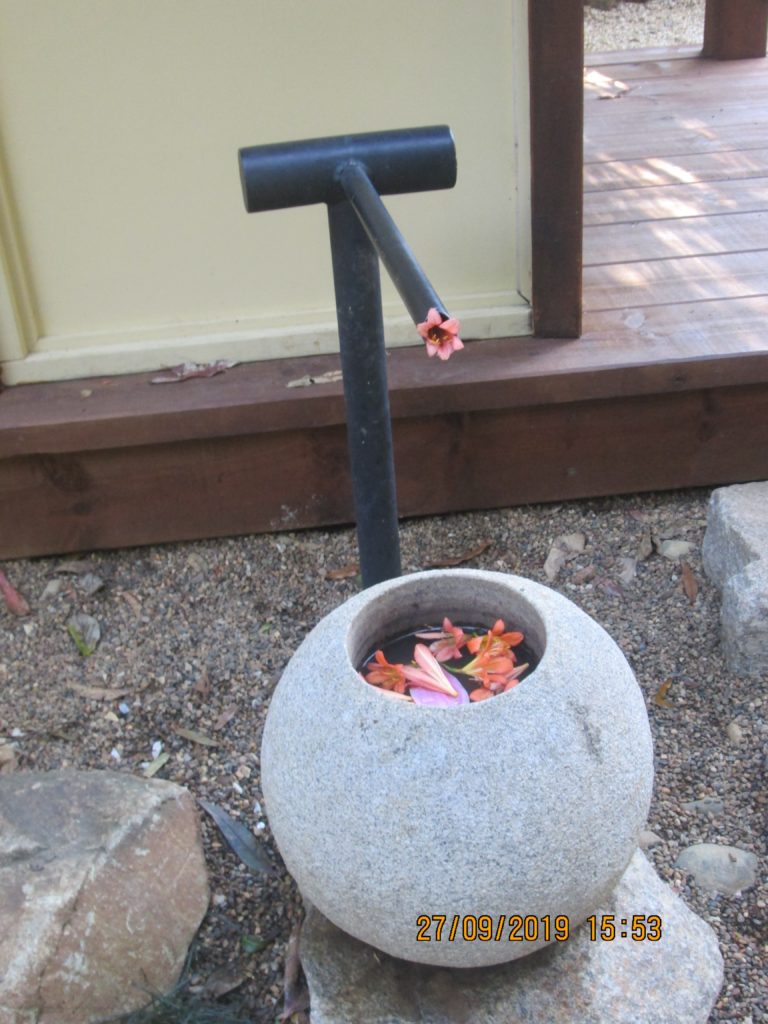
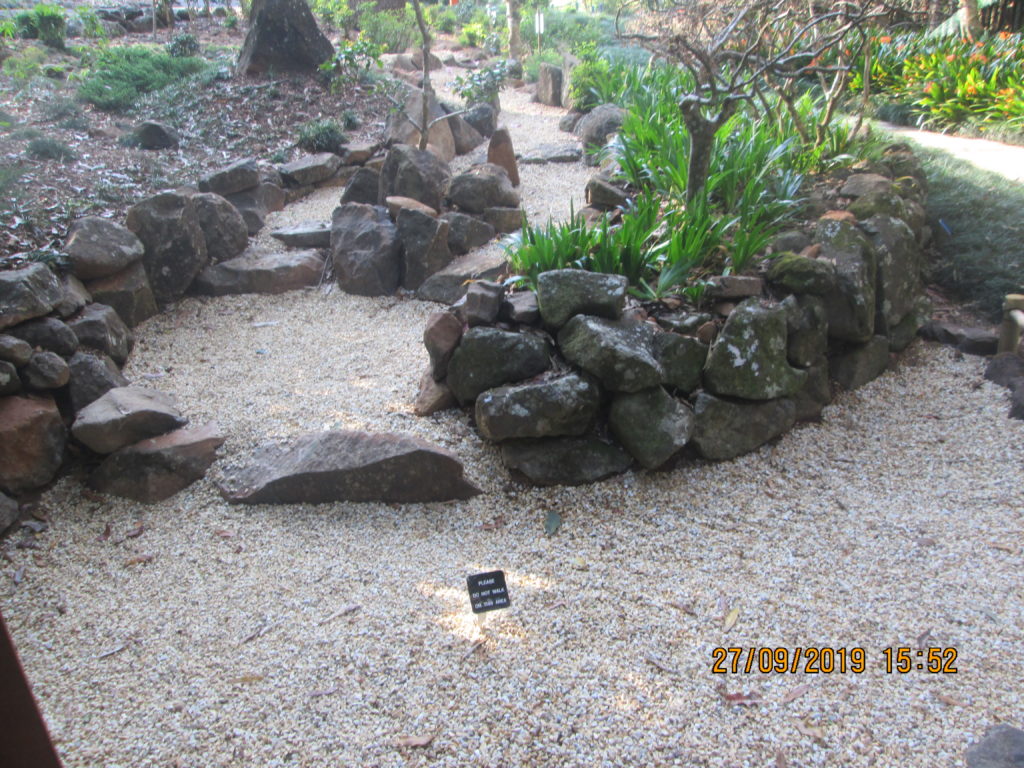
______________________________________________________________________________
4. The Garden Beyond The Japanese Garden:
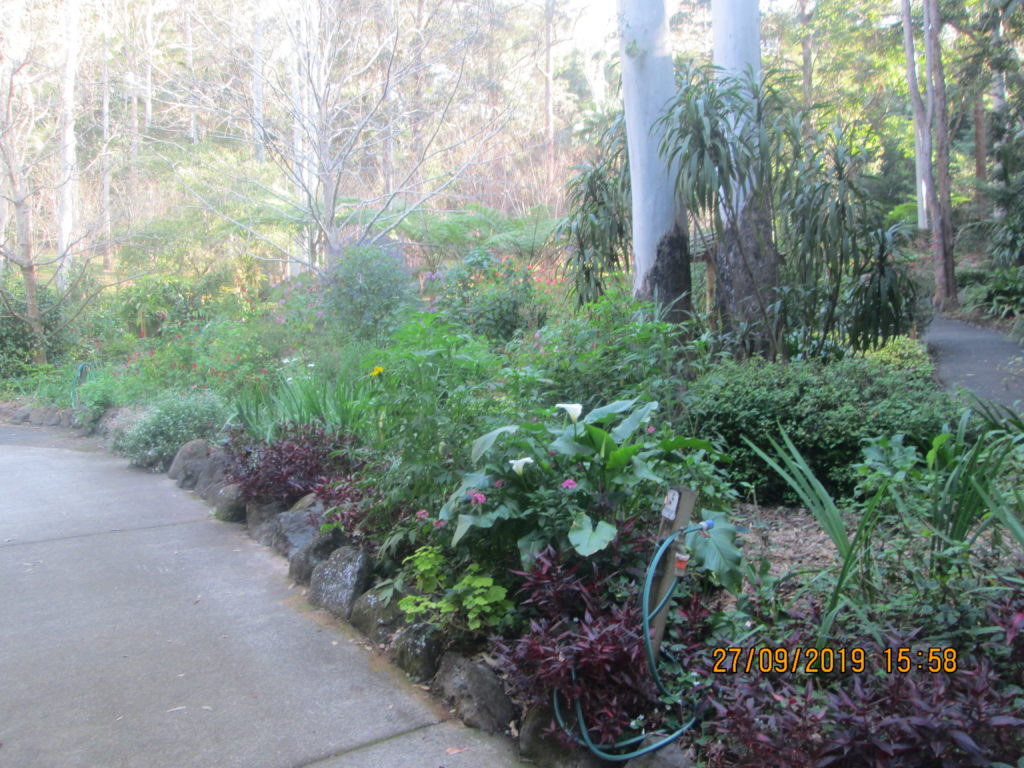
The botanical garden footpath leads out of the Japanese Garden and eventually into a large open grassed area edged by rainforest palms.
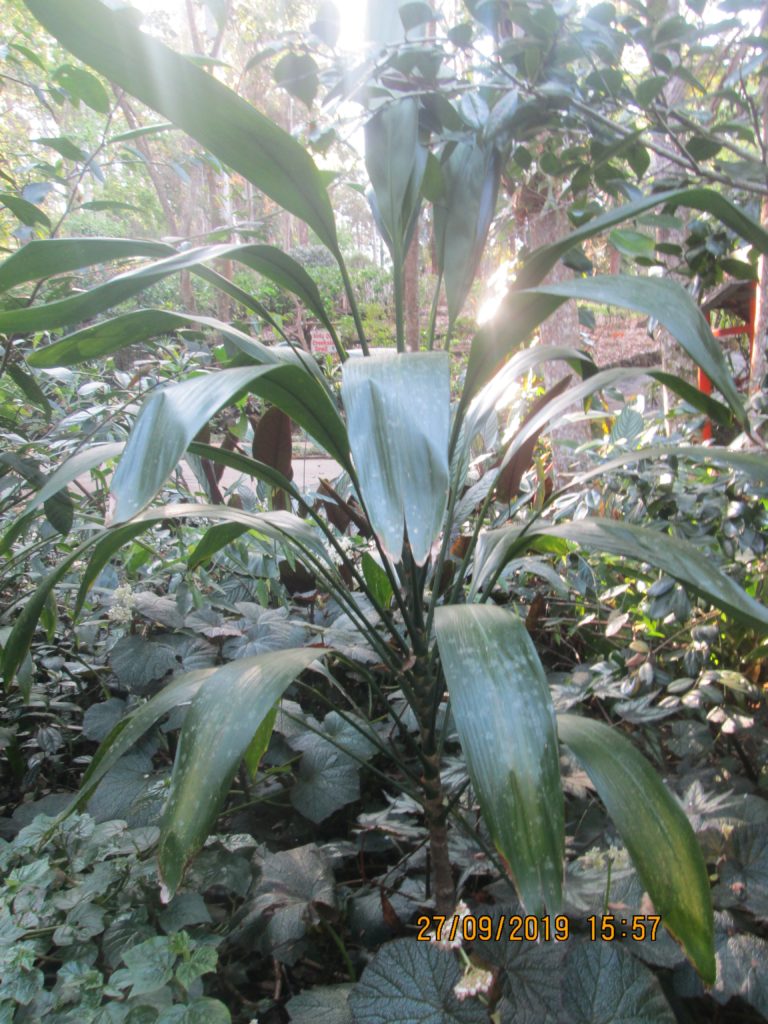
Cordyline petiolaris: a local rainforest plant that thrives in shade and moistre. I know about this plant and have used it often. For twenty years, I ran a small Landscape Design and Construction Company undertaking very creative, individual designer gardens for wealthy residential clients around Brisbane. I was an artistic person, a lateral thinker ….. more artist than businessman. I thought of a landscape as a three-dimensional piece of space that people walked through. This space changed with time as it grew and changed with the time of day. Shadows vs. sun patterns, boulders, colour, plants, trees, earth-forms, solid structures and water. These were the ingredients I used. Unknowingly, I was a landscape sculptor. Rather an intangible product to sell and run a business with!! However I built a financial structure for my life: my marriage, family, house and business from this base.
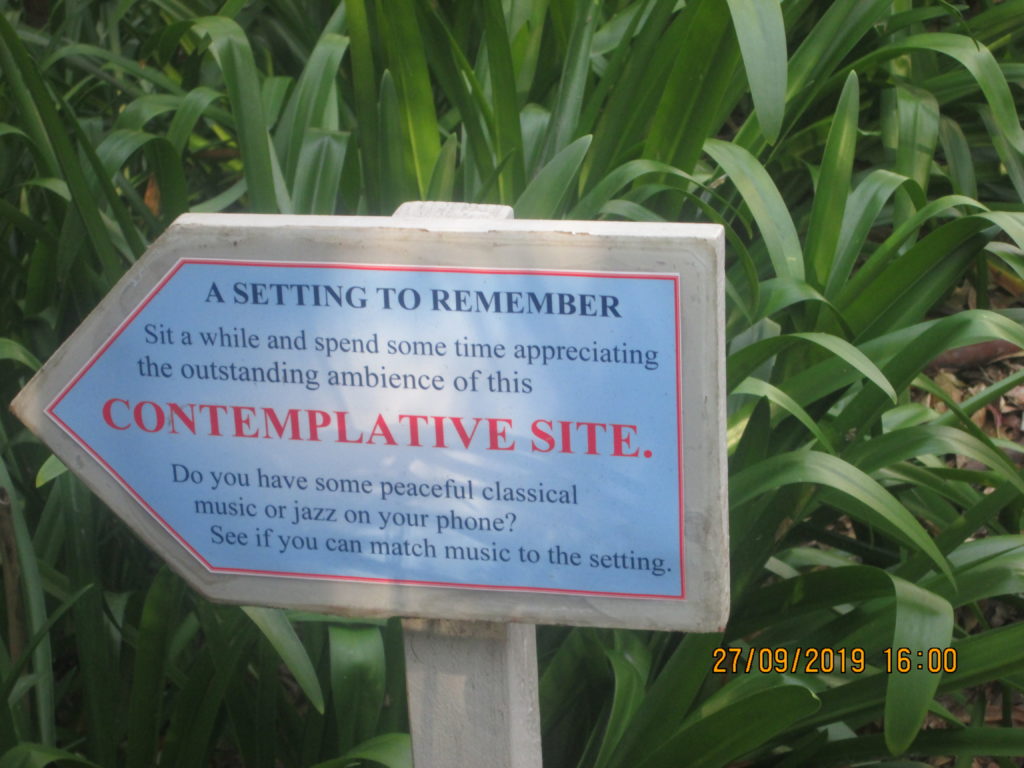
A contemplative space: Having time or a place for contemplation is a rarity in our western culture. Where do we contemplate the invisible dimensions of life ? ….. A very restoring process of life !!
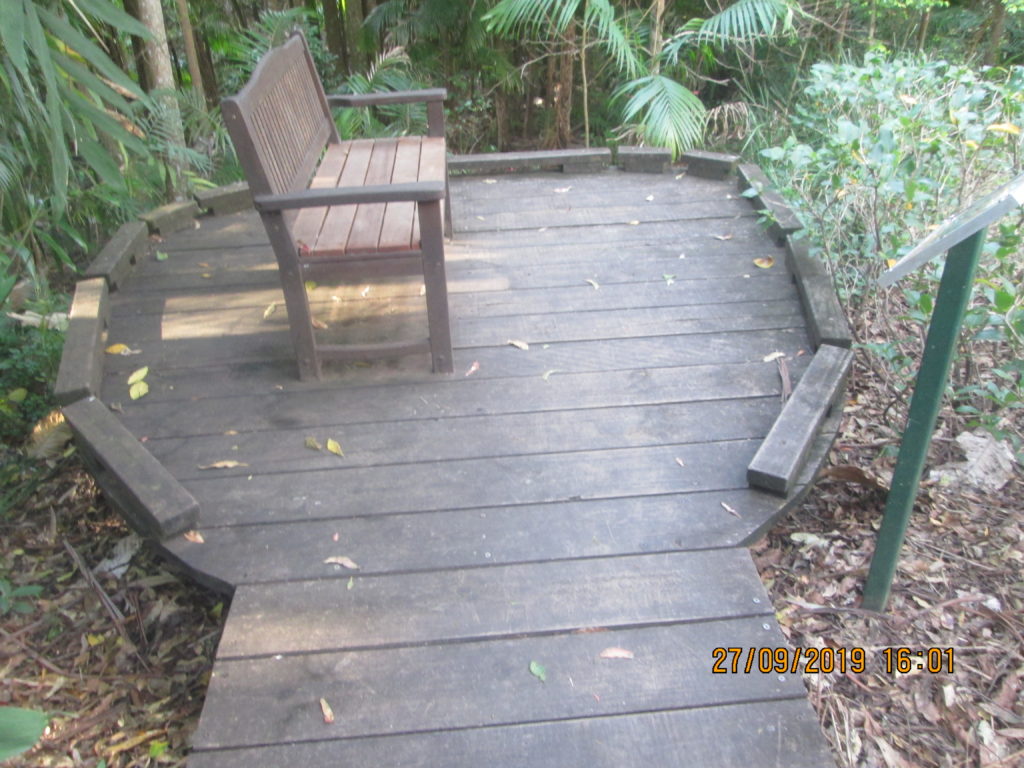
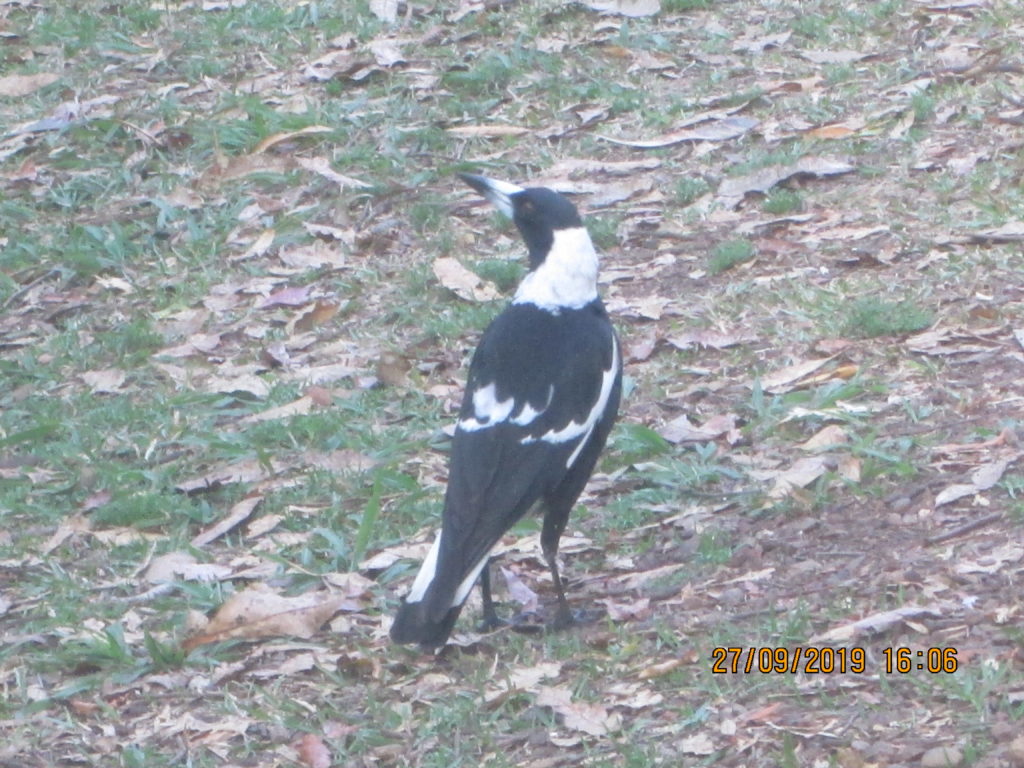
A magpie sharing the contemplative space.
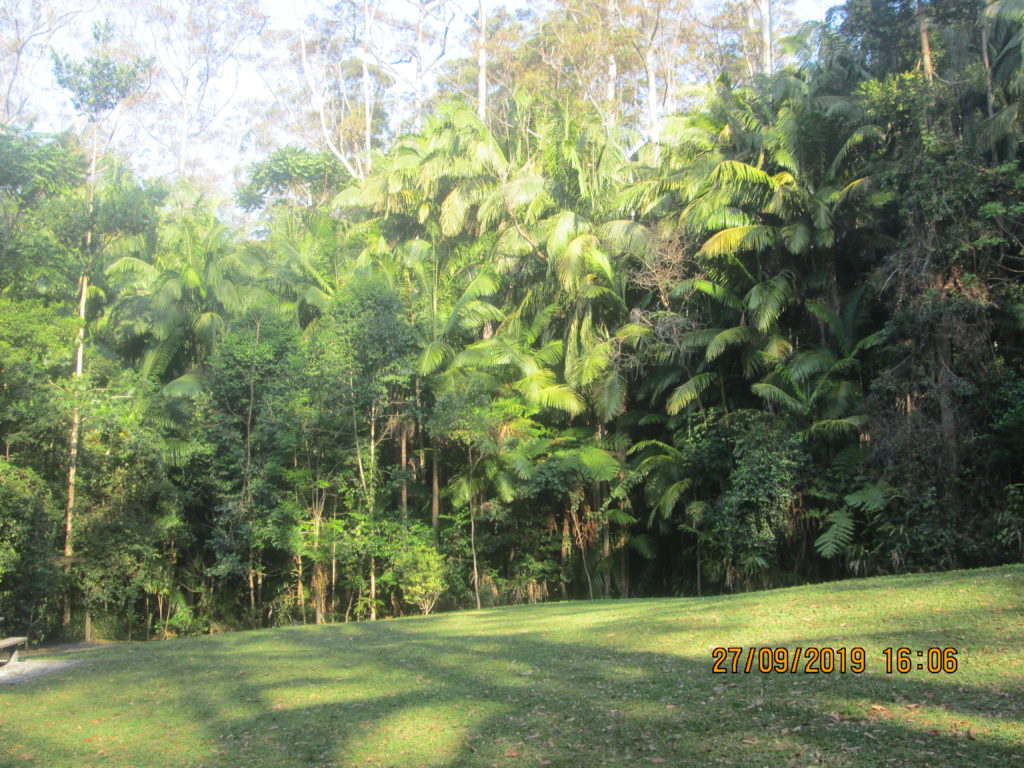

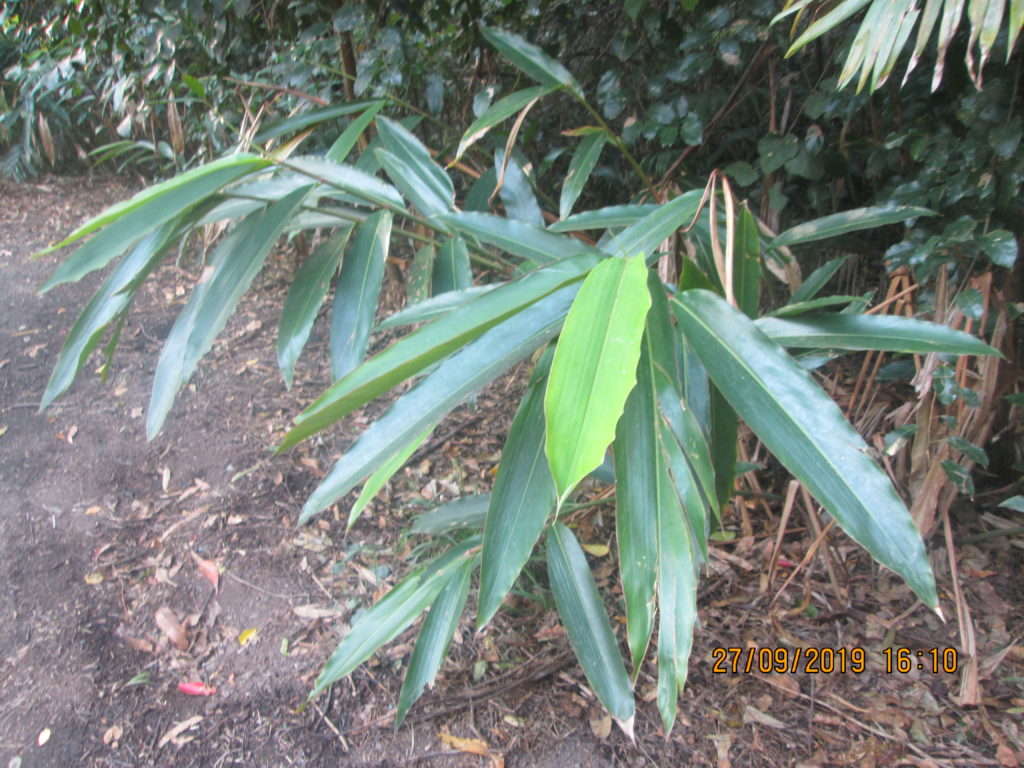
Alpinia caerulea – Australian native ginger, like the cordyline above, is a local rainforest plant that thrives in shade and moistre.
______________________________________________________________________________
The Orchid Green House:
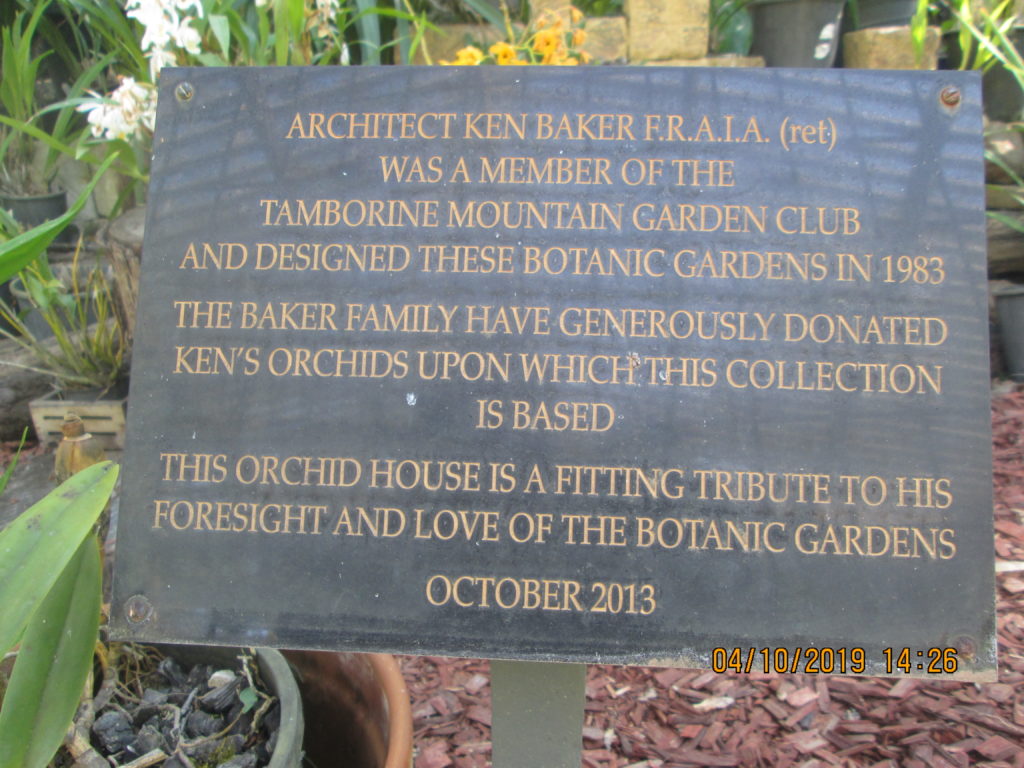
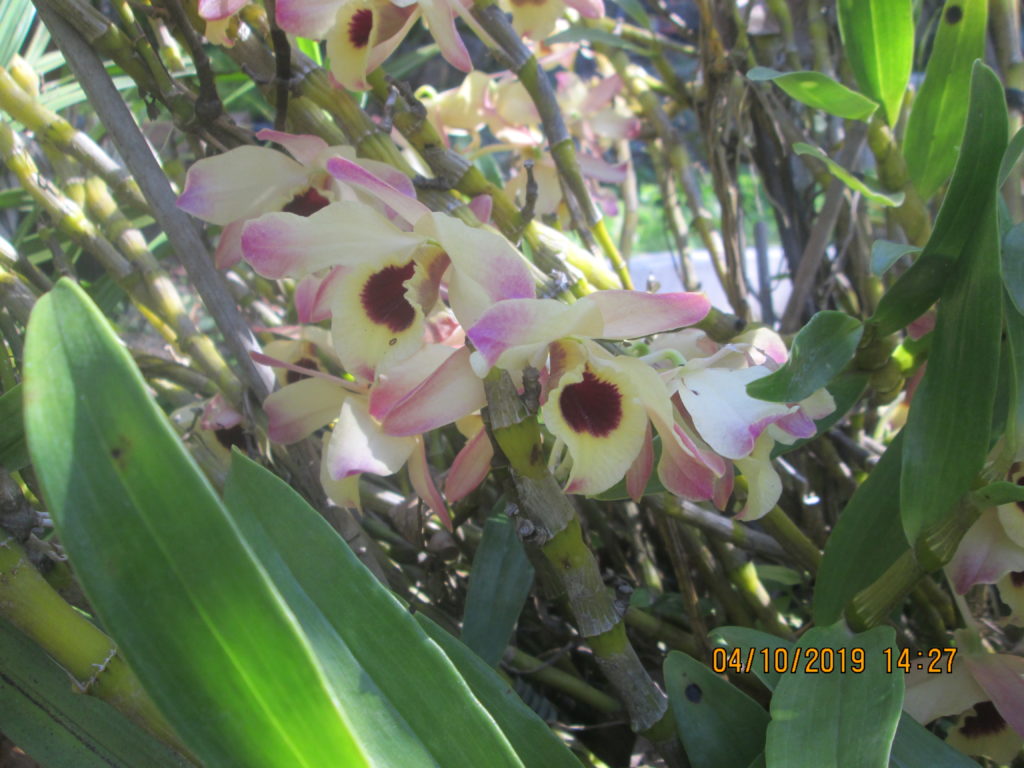
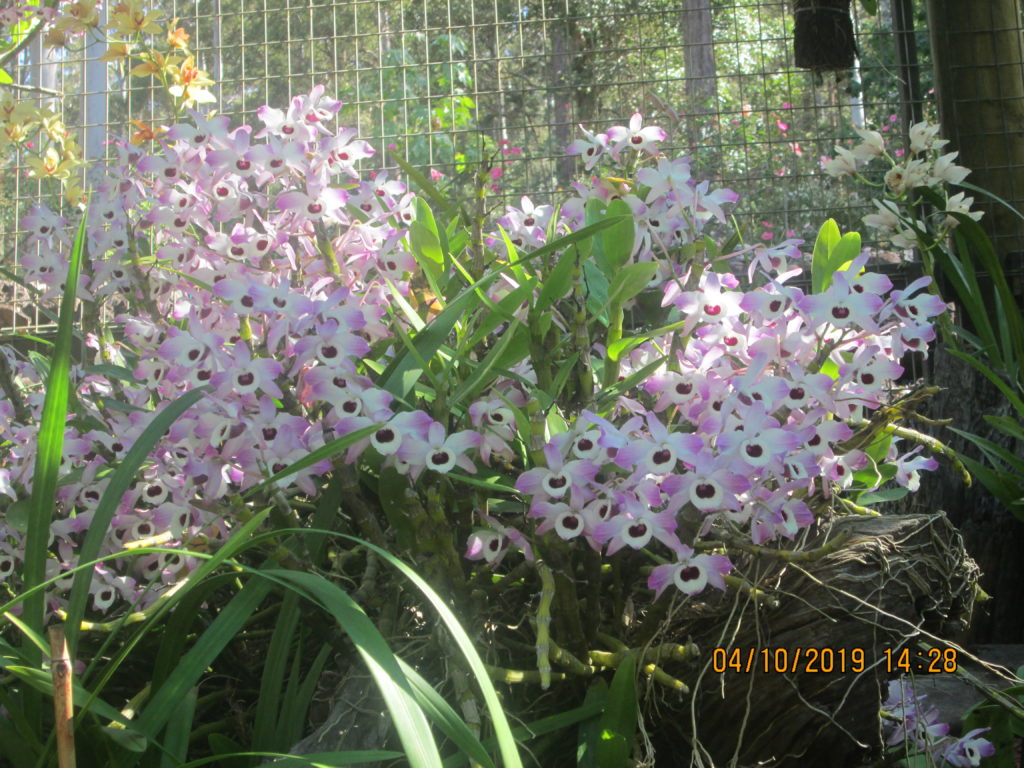
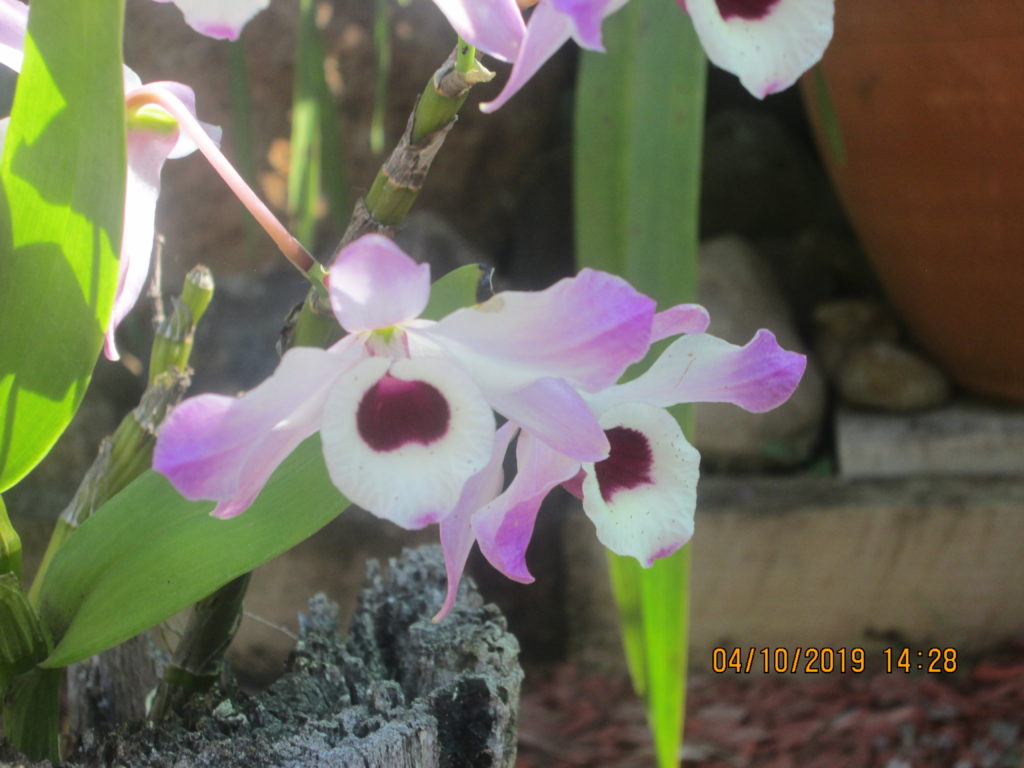
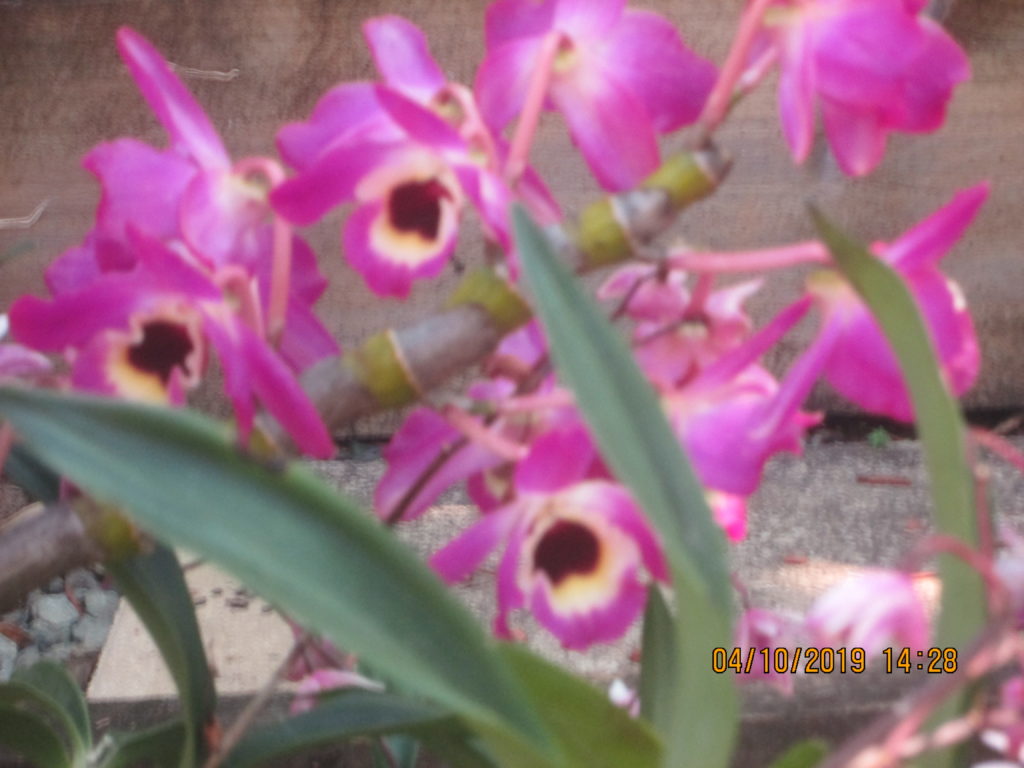
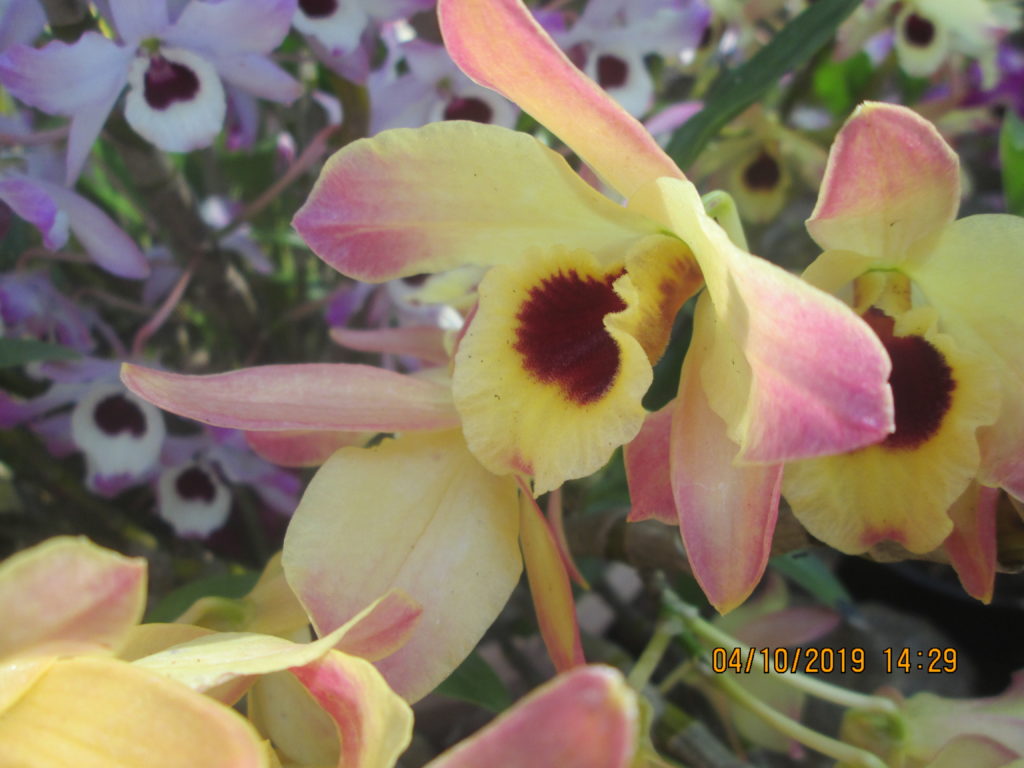

______________________________________________________________________________
The Rose Garden: The rose garden was out in flower with wonderful rose flowers out in September this year ….. see the flowers out below !!
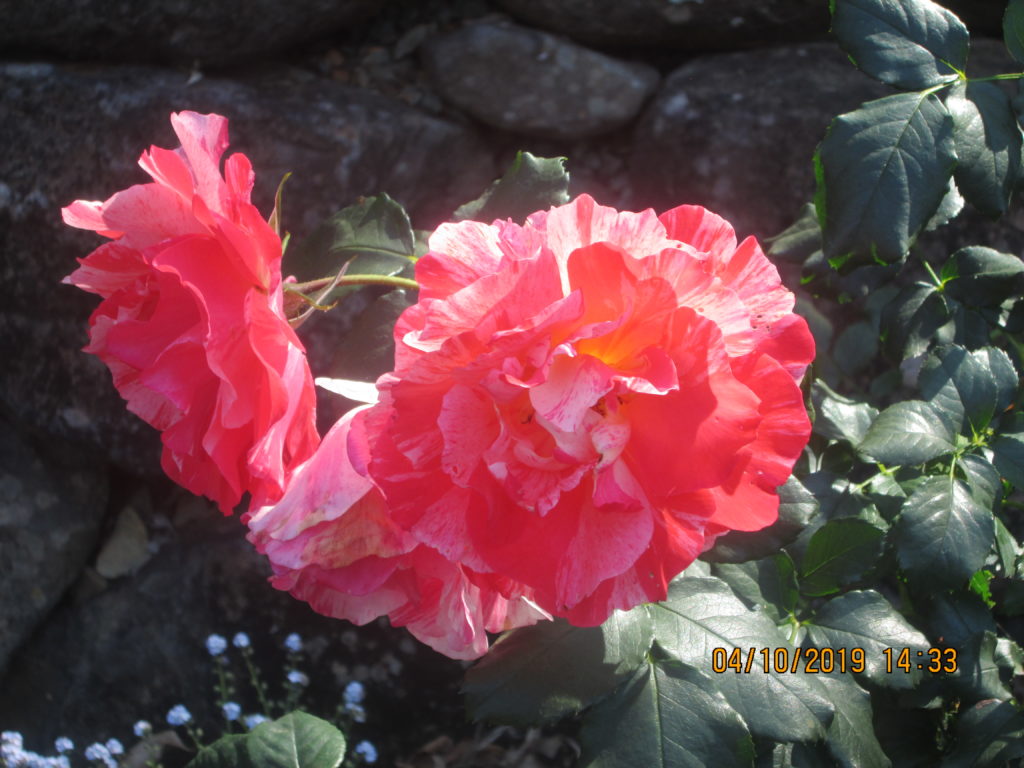
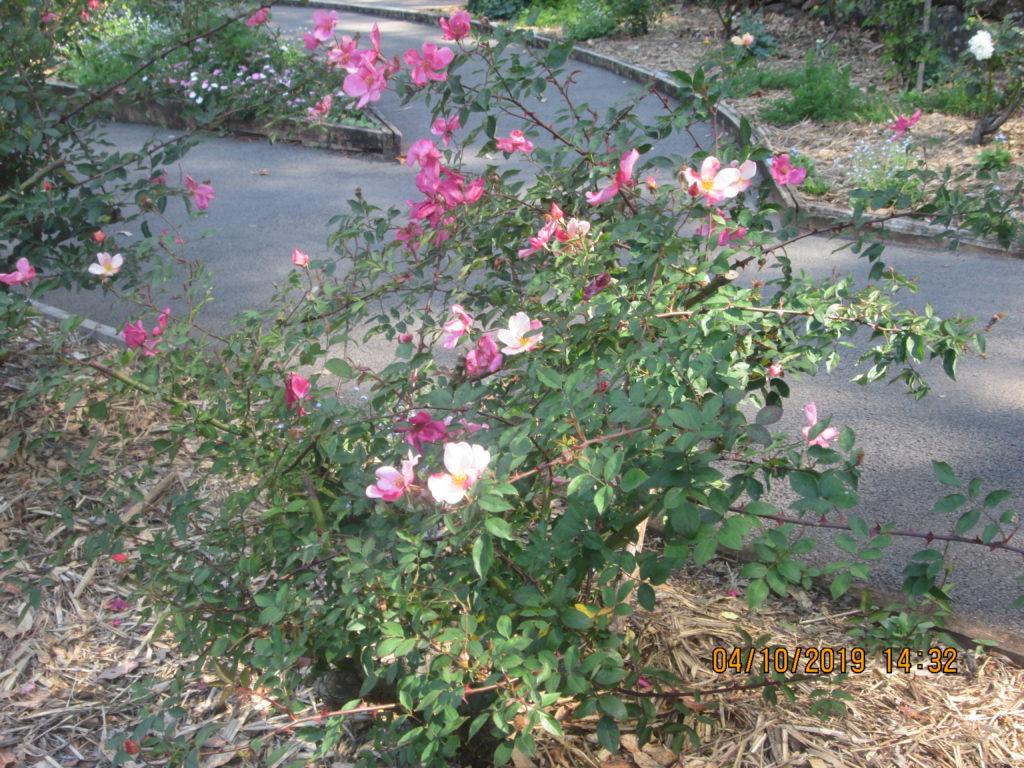
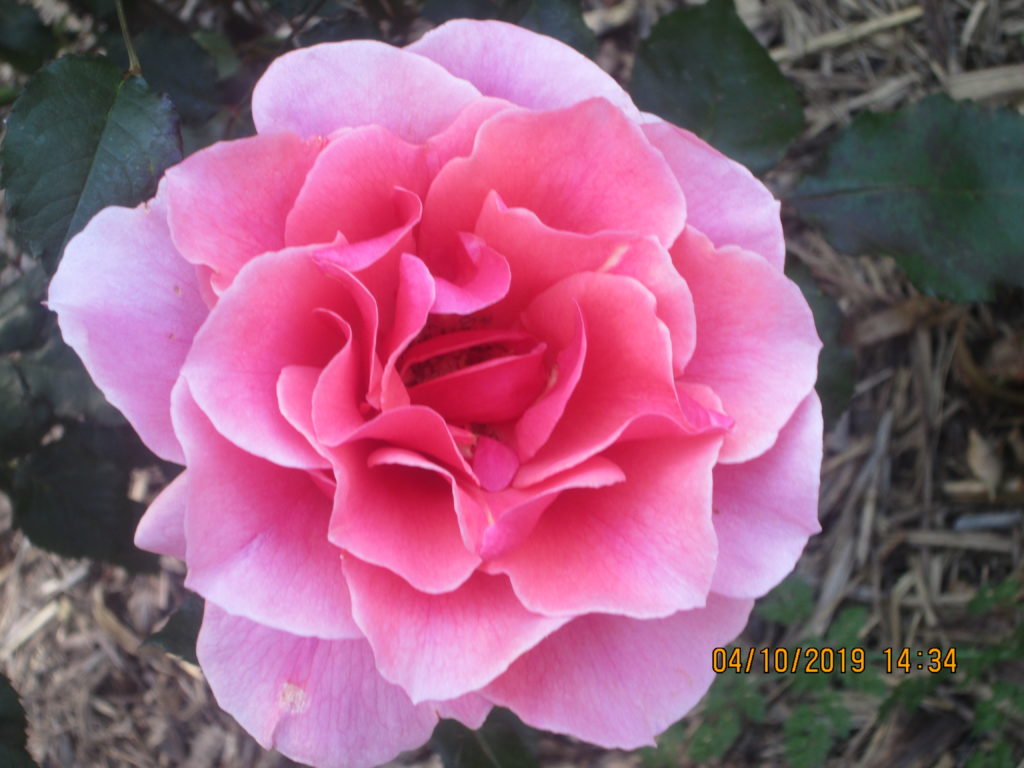
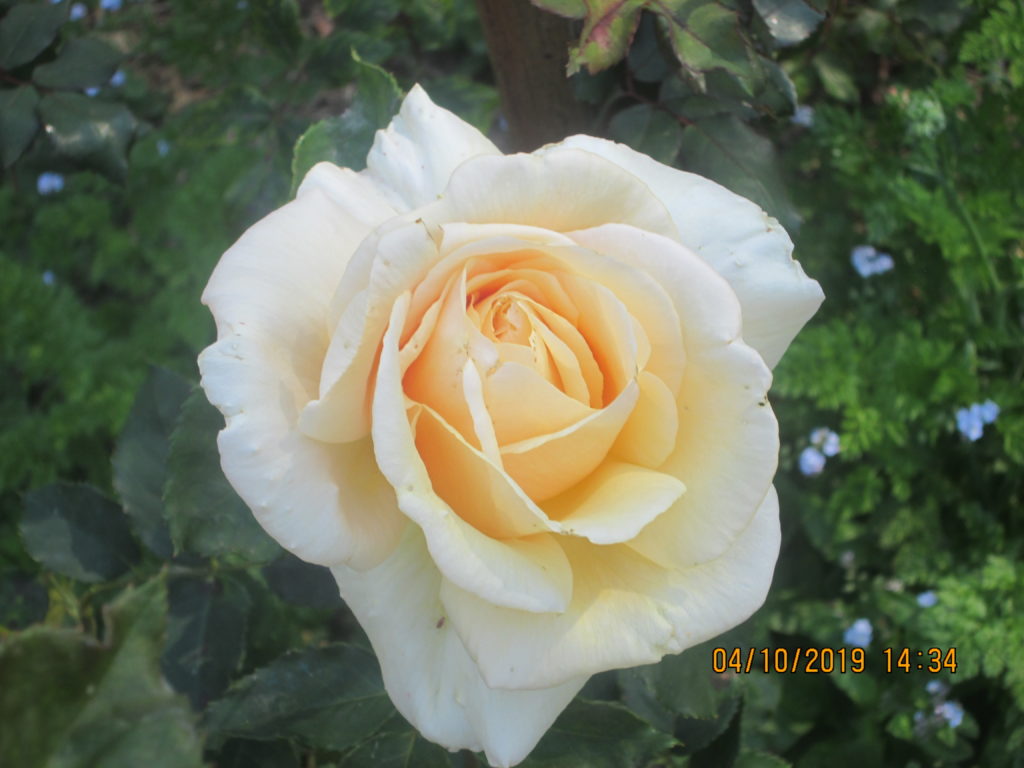
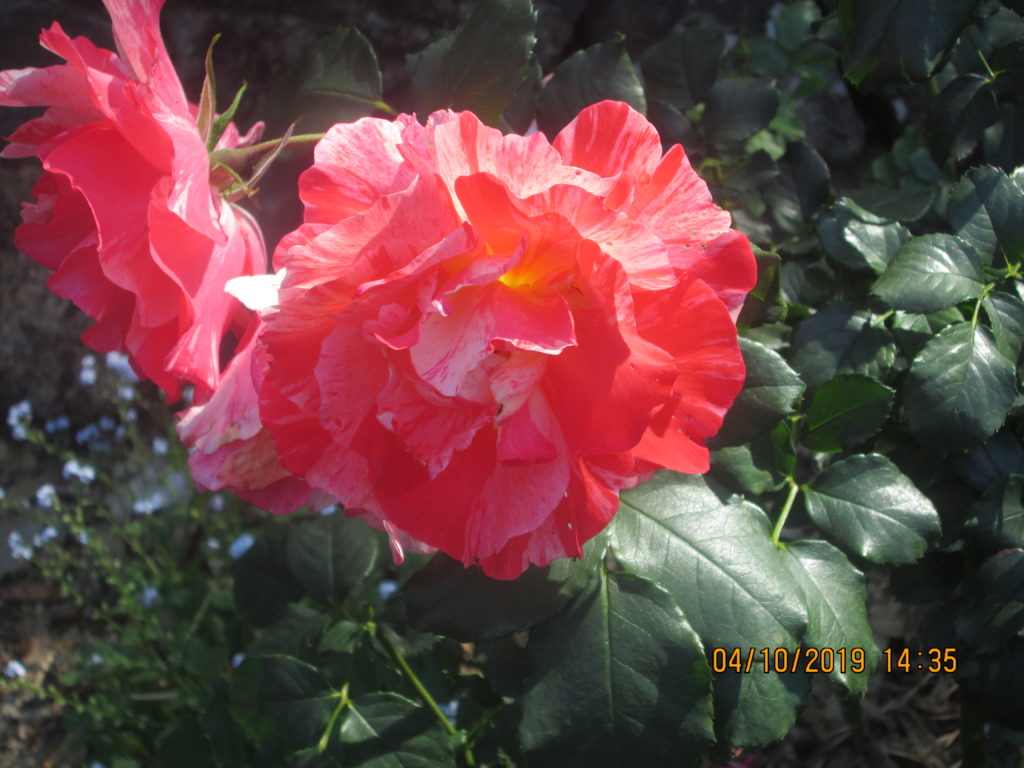
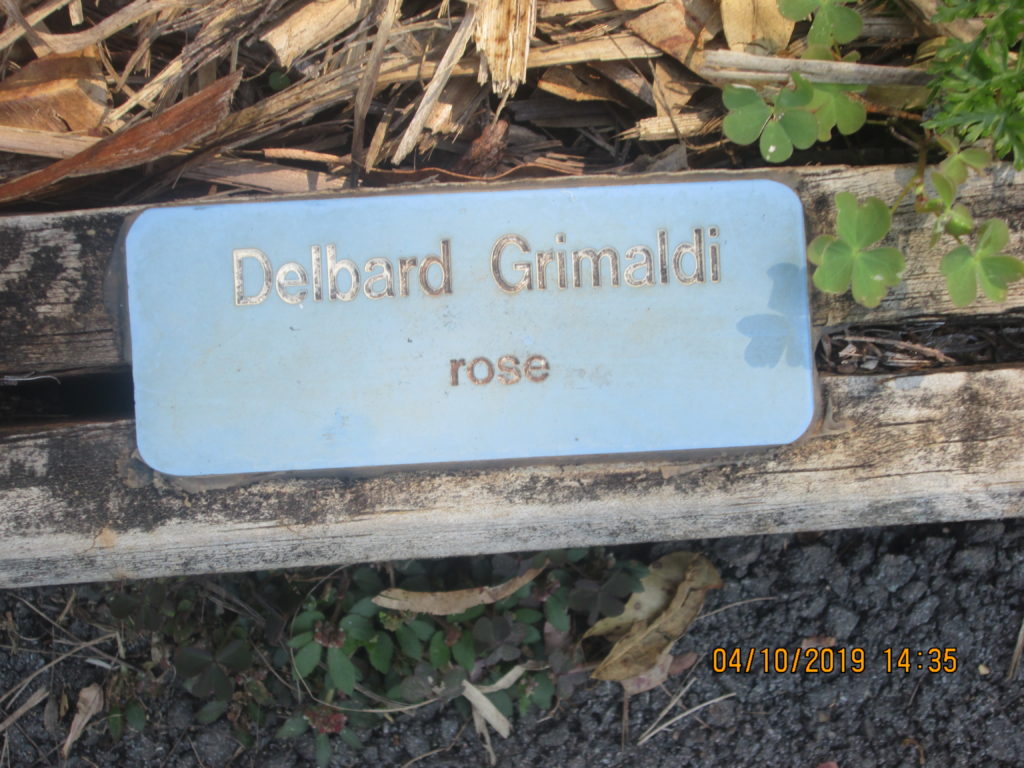
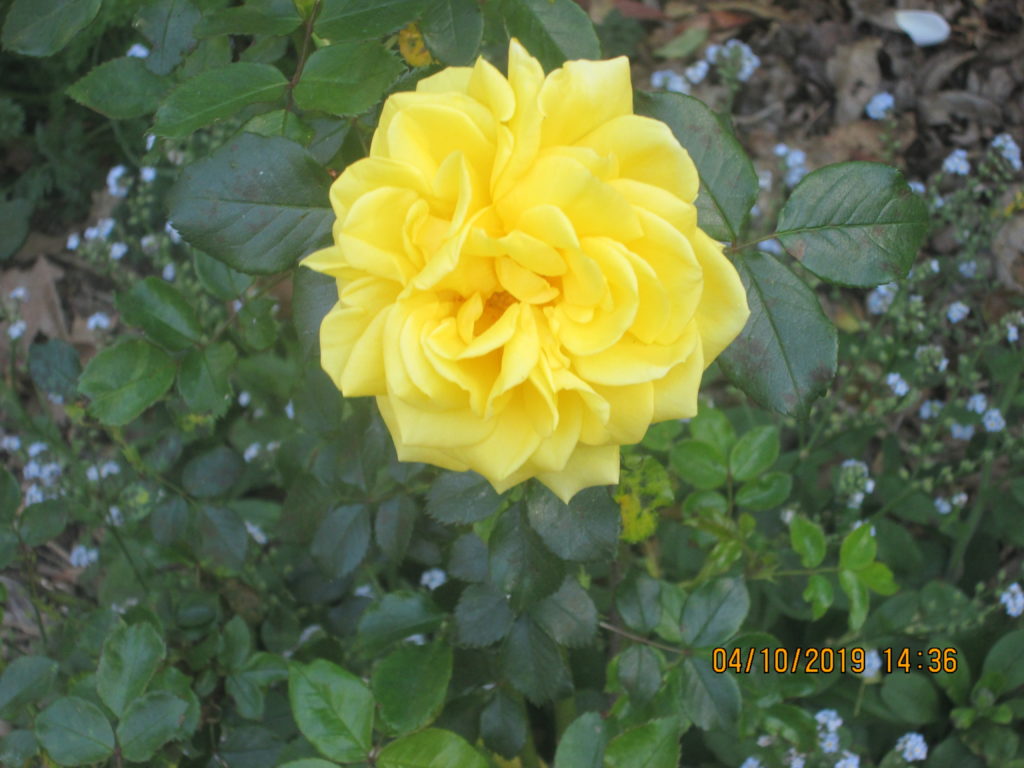
______________________________________________________________________________
The Sooty Owl’s Creekside Trail for Children:
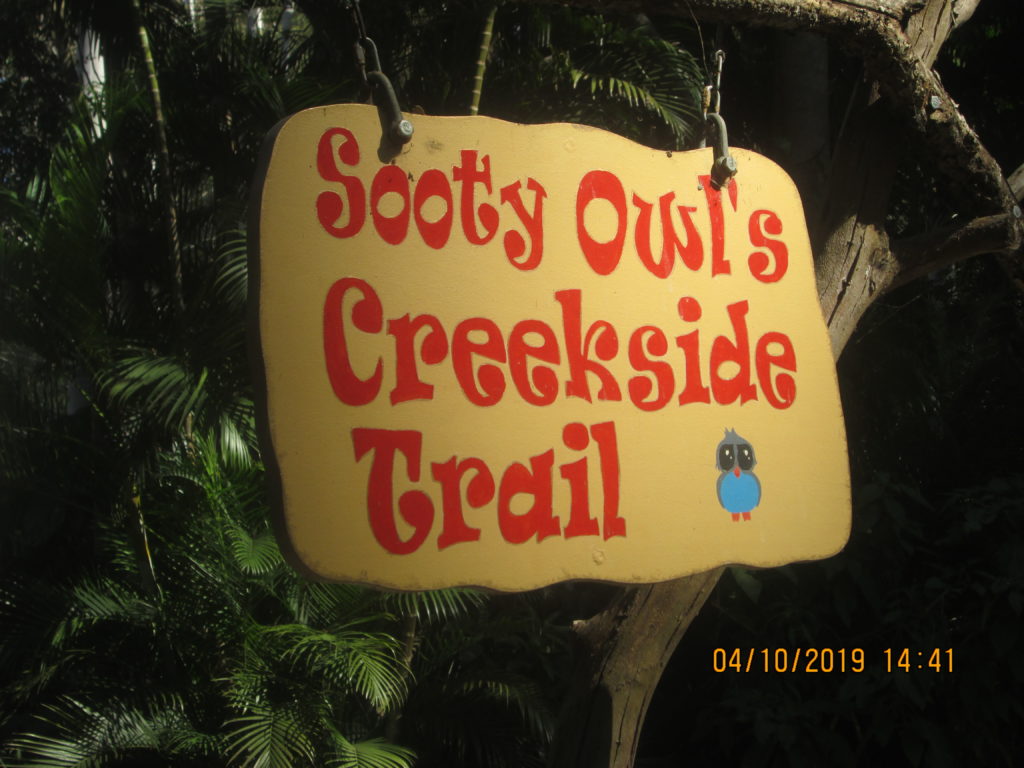
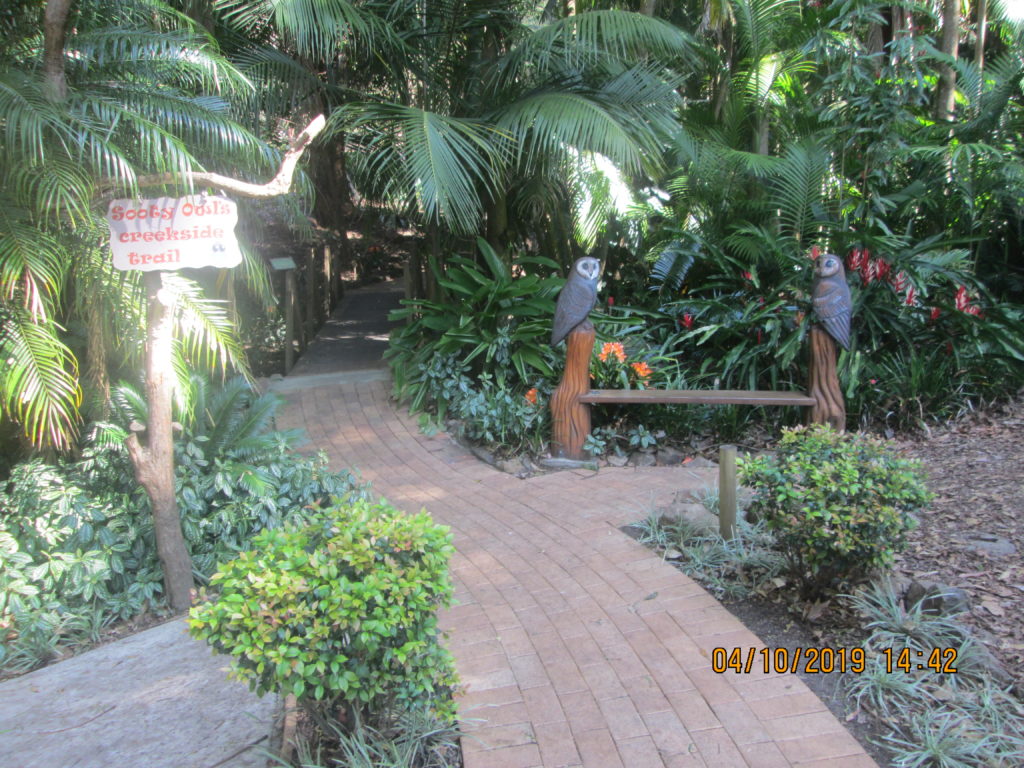
It is wonderful that the botanical gardens have place for children to explore ….. the Sooty Owl’s Creekside Trail.
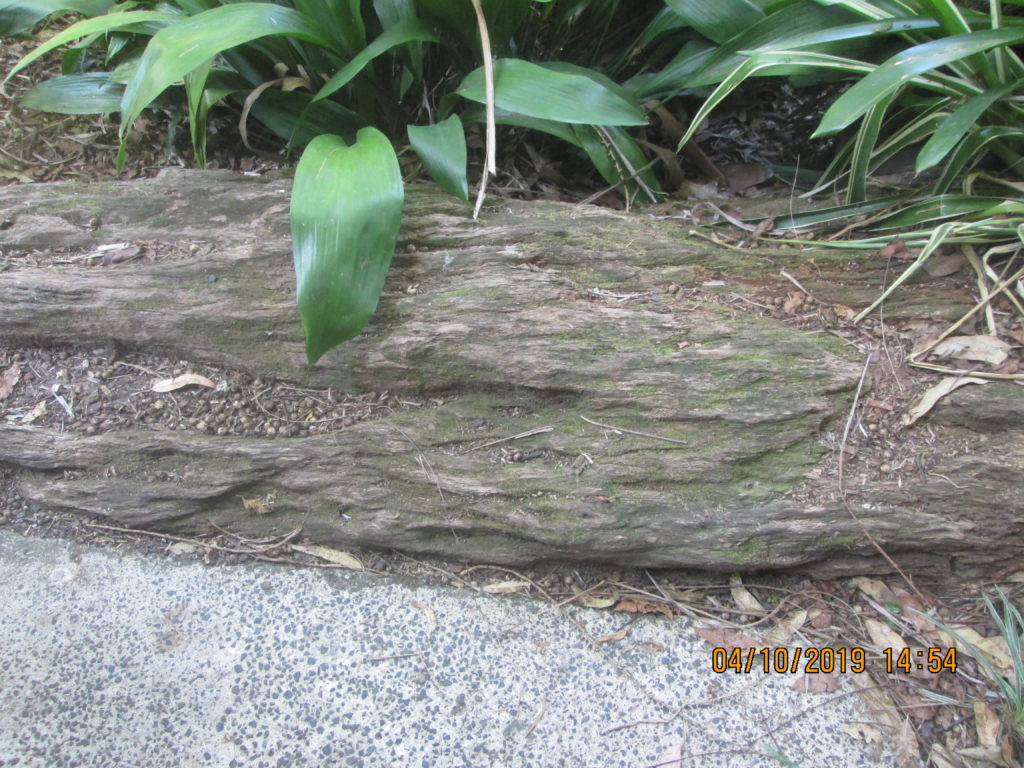
A big log retaining wall …. I love the weathered timber texture of the log.
______________________________________________________________________________
The End of our Visit to the Mt. Tamborine Botanical Gardens.
